Remarkable Geosites of Quito That Are Aspiring to Be a UNESCO Global Geopark
Abstract
:1. Introduction
1.1. Proposal for a New UNESCO Global Geopark in Quito
1.2. Geodynamic, Geological, and Geomorphological Setting of Ecuador and the DMQ
2. Materials and Methods
- 1.
- Criterion: Core values—VP;
- 1.1.
- Category: Scientific and educational values—VSE;
- 1.2.
- Category: Scenic/esthetic values—VSA;
- 1.3.
- Category: Protection values—VPr;
- 2.
- Criterion: Additional values—VA;
- 2.1.
- Category: Functional values—VFn;
- 2.2.
- Category: Tourist values—VTr.
3. Results
3.1. Volcanoes and Volcanic Complexes
3.2. Geological Hazards
3.3. Geoarchaeological Sites
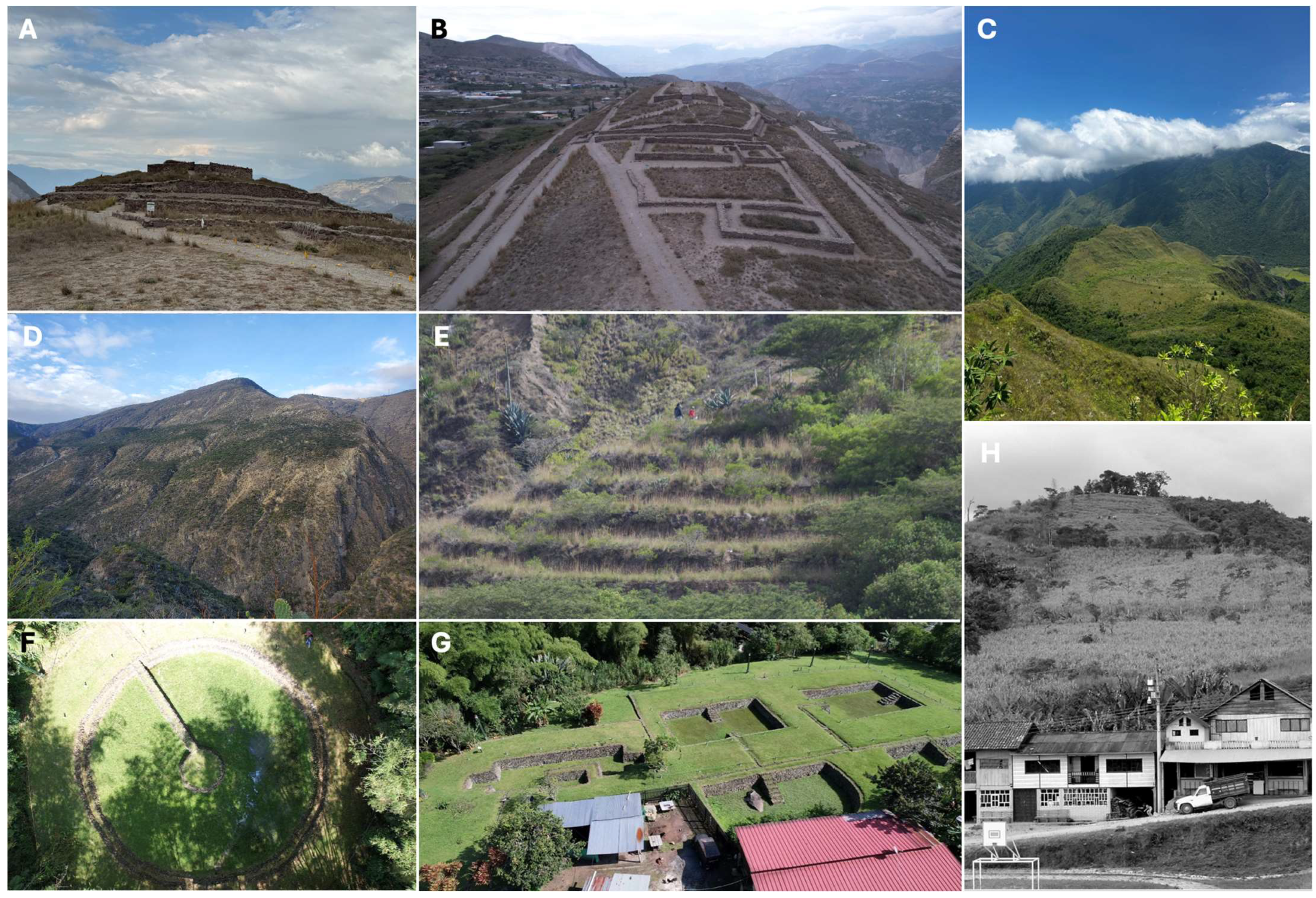

3.4. Geobotanical Sites
3.5. Mining Areas
3.6. Geoheritage Sites
3.7. Geomorphological Sites or Landscapes
3.8. Trails with Geological Interest
3.9. Paleontology
3.10. Speleology
4. Discussion
5. Conclusions
Author Contributions
Funding
Institutional Review Board Statement
Conflicts of Interest
References
- Dernbach, J.C. Sustainable development as a framework for national governance. Case West. Res. Law Rev. 1998, 49, 1. [Google Scholar]
- Boer, B. Institutionalising ecologically sustainable development: The roles of national, state, and local governments in translating grand strategy into action. Willamette L. Rev. 1995, 31, 307. [Google Scholar]
- Boylan, P.J. Geological site designation under the 1972 UNESCO World Heritage Convention. Geol. Soc. Lond. Spec. Publ. 2008, 300, 279–304. [Google Scholar]
- Henriques, M.H.; Brilha, J. UNESCO Global Geoparks: A strategy towards global understanding and sustainability. Epis. J. Int. Geosci. 2017, 40, 349–355. [Google Scholar]
- Fassoulas, C.; Staridas, S.; Perakis, V.; Mavrokosta, C. Revealing the geoheritage of Eastern Crete, through the development of Sitia Geopark, Crete, Greece. Bull. Geol. Soc. Greece 2013, 47, 1004–1016. [Google Scholar]
- Blersch, M.; Keller, J.; Matusch, T.; Dannwolf, L.; Siegmund, A. The Network of UNESCO Sites: Changes and Patterns Visualised with Cartograms. In Creative Ways to Apply Historical GIS: Promoting Research and Teaching About Europe; Springer International Publishing: Cham, Switzerland, 2023; pp. 181–195. [Google Scholar]
- Hose, T.A.; Vasiljevic, D.A. Protecting and Promoting the Geoheritage of South-Eastern Europe. Geoherit. Geotourism Eur. Perspect. 2016, 173–194. [Google Scholar] [CrossRef]
- Golfinopoulos, V.; Papadopoulou, P.; Koumoutsou, E.; Zouros, N.; Fassoulas, C.; Zelilidis, A.; Iliopoulos, G. Quantitative Assessment of the Geosites of Chelmos-Vouraikos UNESCO Global Geopark (Greece). Geosciences 2022, 12, 63. [Google Scholar] [CrossRef]
- Zouros, N. The European Geoparks Network-Geological heritage protection and local development. Epis. J. Int. Geosci. 2004, 27, 165–171. [Google Scholar]
- McKeever, P.J.; Zouros, N.C.; Patzak, M. The UNESCO global network of national geoparks. In The George Wright Forum; George Wright Society: Hancock, MI, USA, 2010; Volume 27, pp. 14–18. [Google Scholar]
- Patzak, C.M.; Eder, W. “UNESCO GEOPARK” A new programme-a new UNESCO label. Geol. Balc. 1998, 28, 33–36. [Google Scholar]
- UNESCO. Operational Guidelines for UNESCO Global Geoparks. Available online: https://unesdoc.unesco.org/ark:/48223/pf0000391354 (accessed on 12 December 2024).
- Papadopoulou, E.E.; Papakonstantinou, A.; Vasilakos, C.; Zouros, N.; Tataris, G.; Proestakis, S.; Soulakellis, N. Scale issues for geoheritage 3D mapping: The case of Lesvos Geopark, Greece. Int. J. Geoherit. Parks 2022, 10, 435–446. [Google Scholar]
- Becerra-Ramírez, R.; Gosálvez, R.U.; Escobar, E.; González, E.; Serrano-Patón, M.; Guevara, D. Characterization and geotourist resources of the Campo de Calatrava Volcanic Region (Ciudad Real, Castilla-La Mancha, Spain) to develop a UNESCO global geopark project. Geosciences 2020, 10, 441. [Google Scholar] [CrossRef]
- Leitão, L.; Badman, T. Opportunities for integration of cultural and natural heritage perspectives under the World Heritage Convention: Towards connected practice. In Conserving Cultural Landscapes; Routledge: London, UK, 2014; pp. 75–89. [Google Scholar]
- Jones, C. History of geoparks. Geol. Soc. Lond. Spec. Publ. 2008, 300, 273–277. [Google Scholar]
- Lee, Y.; Jayakumar, R. Economic impact of UNESCO Global Geoparks on local communities: Comparative analysis of three UNESCO Global Geoparks in Asia. Int. J. Geoherit. Parks 2021, 9, 189–198. [Google Scholar]
- Du, Y.; Girault, Y. A genealogy of UNESCO global geopark: Emergence and evolution. Int. J. Geoherit. Parks 2018, 6, 1–17. [Google Scholar]
- Errami, E.; Schneider, G.; Ennih, N.; Randrianaly, H.N.; Bendaoud, A.; Noubhani, A.; Bobrowsky, P. Geoheritage and geoparks in Africa and the Middle-East: Challenges and perspectives. Geoherit. Geoparks Case Stud. Afr. Beyond 2015, 3–23. [Google Scholar] [CrossRef]
- Fassoulas, C.; Nikolakakis, E.; Staridas, S. Digital tools to serve geotourism and sustainable development at Psiloritis UNESCO Global Geopark in COVID times and beyond. Geosciences 2022, 12, 78. [Google Scholar] [CrossRef]
- Gfeller, A.É.; Eisenberg, J. UNESCO and the Shaping of Global Heritage. In A History of UNESCO: Global Actions and Impacts; Palgrave Macmillan: London, UK, 2016; pp. 279–299. [Google Scholar]
- Kiernan, K. Landforms as sacred places: Implications for geodiversity and geoheritage. Geoheritage 2015, 7, 177–193. [Google Scholar]
- Zouros, N. Global geoparks network and the new UNESCO Global Geoparks Programme. Bull. Geol. Soc. Greece 2016, 50, 284–292. [Google Scholar]
- de Castro, E.; Loureiro, F.; Patrocínio, F.; Gomes, H.; Castel-Branco, J.; Cezar, L.; Fernandes, M.; Azevedo, P. The Estrela UNESCO Global Geopark territorial development strategy: A holistic vision for the twenty-first century. Econ. Manag. Geotourism 2022, 19–46. [Google Scholar] [CrossRef]
- Carvalho, I.S.; Henriques, M.H.; Castro AR, S.F.; Félix, Y.R. Promotion of the Geological Heritage of Araripe Unesco Global Geopark, Brazil: The Casa da Pedra Reference Center. Geoheritage 2020, 12, 17. [Google Scholar]
- Toulkeridis, T.; Tamayo, E.; Simón-Baile, D.; Merizalde-Mora, M.J.; Reyes-Yunga, D.F.; Viera-Torres, M.; Heredia, M. Climate Change according to Ecuadorian academics–Perceptions versus facts LA GRANJA. Rev. Cienc. Vida 2020, 31, 21–46. [Google Scholar]
- Chaurette, E.R.I.C.; Sarmiento, F.O.; Rodriguez, J. A Protected Landscape candidate in the tropical Andes of Ecuador. Parks 2003, 13, 42–51. [Google Scholar]
- Ayala-Chauvin, M.; Avilés-Castillo, F.; Buele, J. Exploring the landscape of data analysis: A review of its application and impact in Ecuador. Computers 2023, 12, 146. [Google Scholar] [CrossRef]
- Rieckmann, M.; Adomßent, M.; Härdtle, W.; Aguirre, P. Sustainable development and conservation of biodiversity hotspots in Latin America: The case of Ecuador. In Biodiversity Hotspots; Springer: Berlin/Heidelberg, Germany, 2011; pp. 435–452. [Google Scholar]
- Dempsey, J.; Irvine-Broque, A.; Bigger, P.; Christiansen, J.; Muchhala, B.; Nelson, S.; Rojas-Marchini, F.; Shapiro-Garza, E.; Schuldt, A.; DiSilvestro, A. Biodiversity targets will not be met without debt and tax justice. Nat. Ecol. Evol. 2022, 6, 237–239. [Google Scholar]
- Arellano Guerrón, S.L.; Arroyo Mera, D.M.; Carrión Albuja, E.A.; Merizalde Leiton, C.E. Geoparques mundiales de la UNESCO y su importancia en el desarrollo sostenible de las comunidades Estudio de caso: “Geoparque Imbabura”. Siembra 2019, 6, 93–108. [Google Scholar]
- Sánchez-Cortez, J.L.; Simbaña-Tasiguano, M. Geoparks and their implementation in Latin America Geoparks and their implementation in Latin America. Geogr. Stud. 2018, 79, 445–467. [Google Scholar]
- Herrera Franco, G.; Carrion Mero, P.; Morante Carballo, F.; Herrera Narváez, G.; Briones Bitar, J.; Blanco Torrens, R. Strategies for the development of the value of the mining-industrial heritage of the Zaruma-Portovelo, ecuador, in the context of a geopark project. Int. J. Energy Prod. Manag. 2020, 5, 48–59. [Google Scholar]
- Burgos-Vigna, D. Quito, a World Heritage City or a city to live in? Right to the city and right to heritage in the ‘Good Living State’. City 2017, 21, 550–567. [Google Scholar]
- Muñoz-Barriga, A.; Maldonado Pérez, G. The challenges of natural and cultural heritages of Galapagos and Quito, Ecuador. In Tourism Planning and Development in Latin America; CABI: Wallingford, UK, 2020; pp. 86–103. [Google Scholar]
- Siguencia Ávila, M.E.; Rey Pérez, J. Heritage values protection, from the monument to the urban dimension Case study: The historic centre of Santa Ana de los Ríos de Cuenca, Ecuador. Hist. Environ. Policy Pract. 2016, 7, 164–176. [Google Scholar]
- Heras, V.; Chávez, M.B.; Abril, C.; Briones, J.C. Heritage inventory as the base for a monitoring system in the world heritage city of Cuenca. In Structural Analysis of Historical Constructions: Anamnesis Diagnosis, Therapy, Controls; CRC Press: Boca Raton, FL, USA, 2016; pp. 181–184. [Google Scholar]
- Salin, E. Heritage routes and multiple narratives. The Inca Road System (Qhapaq Ñan, Camino principal andino/Andean road system): A specific case of a non-tourism heritage route? Viat. Tour. Rev. 2021, 20. [Google Scholar] [CrossRef]
- Kelley, D.; Salazar, R. Geosites in the Galápagos Islands used for geology education programs. Geoheritage 2017, 9, 351–358. [Google Scholar]
- Kelley, D.; Page, K.; Quiroga, D.; Salazar, R.; Kelley, D.; Page, K.; Quiroga, D.; Salazar, R. Geoconservation, geotourism and sustainable development in the Galapagos. In The Footsteps of Darwin: Geoheritage, Geotourism and Conservation in the Galapagos Islands; Springer: Cham, Switzerland, 2019; pp. 95–133. [Google Scholar]
- Carrión-Mero, P.; Morante-Carballo, F.; Herrera-Franco, G.A.; Maldonado-Zamora, A.; Paz-Salas, N. The context of Ecuador’s world heritage, for sustainable development strategies. Int. J. Des. Nat. Ecodyn. 2020, 15, 39–46. [Google Scholar]
- Sánchez-Cortez, J.L. Conservation of geoheritage in Ecuador: Situation and perspectives. Int. J. Geoherit. Parks 2019, 7, 91–101. [Google Scholar]
- Engelbauer, M. Global Assessment of Recent UNESCO Biosphere Reserve Quality Enhancement Strategies and Interlinkages with Other UNESCO Labels; BoD-Books on Demand: Hamburg, Germany, 2023. [Google Scholar]
- Berrezueta, E.; Sánchez-Cortez, J.L.; Aguilar-Aguilar, M. Inventory and characterization of geosites in Ecuador: A review. Geoheritage 2021, 13, 93. [Google Scholar]
- Carrión-Mero, P.; Duenas-Tovar, J.; Jaya-Montalvo, M.; Berrezueta, E.; Jiménez-Orellana, N. Geodiversity assessment to regional scale: Ecuador as a case study. Environ. Sci. Policy 2022, 136, 167–186. [Google Scholar]
- Soria, E.A.A.; Mármol, E.E.R.; Díaz, Á.S.T.; Enríquez, M.I.M. Tungurahua Volcano Geopark Project towards geotourism in Baños de Agua Santa Ecuador. Explor. Digit. 2020, 4, 70–89. [Google Scholar]
- Toulkeridis, T.; Echegaray-Aveiga, R.C.; Martinez-Maldonado, K.P. Shock metamorphism in volcanic rock due to the impact of the Miguir-Cajas meteorite in 1995 and its importance for Ecuador. Geo J. Tour. Geosites 2021, 35, 315–321. [Google Scholar]
- Rubira-Gómez, G.; Malavé-Hernández, J.; Jaya-Montalvo, M.; Candell-Soto, J.; Caicedo-Potosí, J.; Merchán-Sanmartín, B.; Aguilar-Aguilar, M.; Morante-Carballo, F. Sustainable Design for Geotourism Interpretation Centres: Enhancing the Santa Elena Peninsula Geopark Project Experience. Heritage 2024, 7, 499–516. [Google Scholar] [CrossRef]
- Vera, D.; Simbaña-Tasiguano, M.; Guzmán, O.; Cabascango, E.; Sánchez-Cortez, J.L.; Campos, C.; Grefa, H. Quantitative Assessment of Geodiversity in Ecuadorian Amazon—Case Study: Napo Sumaco Aspiring UNESCO Geopark. Geoheritage 2023, 15, 28. [Google Scholar]
- Cortez, J.L.S. Ecuadorian Committee of Geoparks (CEG) and its contribution with conservation and sustainable use of geo-heritage in Ecuador. J. Geosci. 2023, 1, 26–31. [Google Scholar]
- Constantin, S.; Toulkeridis, T.; Moldovan, O.T.; Villacís, M.; Addison, A. Caves and karst of Ecuador–state-of-the-art and research perspectives. Phys. Geogr. 2019, 40, 28–51. [Google Scholar]
- Carrión-Mero, P.; Ayala-Granda, A.; Serrano-Ayala, S.; Morante-Carballo, F.; Aguilar-Aguilar, M.; Gurumendi-Noriega, M.; Paz-Salas, N.; Herrera-Franco, G.; Berrezueta, E. Assessment of geomorphosites for geotourism in the northern part of the “ruta escondida”(Quito, ecuador). Sustainability 2020, 12, 8468. [Google Scholar] [CrossRef]
- Cuesta, F.; Peralvo, M.; Merino-Viteri, A.; Bustamante, M.; Baquero, F.; Freile, J.F.; Muriel, P.; Torres-Carvajal, O. Priority areas for biodiversity conservation in mainland Ecuador. Neotrop. Biodivers. 2017, 3, 93–106. [Google Scholar]
- Coltorti, M.; Ollier, C.D. Geomorphic and tectonic evolution of the Ecuadorian Andes. Geomorphology 2000, 32, 1–19. [Google Scholar]
- Mora, M.J.M.; González, C.A.L.; Hidalgo, D.A.E.; Toulkeridis, T. Determination of altitudes of the three main Ecuadorian summits through GNSS positioning. Geod. Geodyn. 2022, 13, 343–351. [Google Scholar]
- Lonsdale, P. Ecuadorian subduction system. AAPG Bull. 1978, 62, 2454–2477. [Google Scholar]
- Massonne, H.J.; Toulkeridis, T. Widespread relics of high-pressure metamorphism confirm major terrane accretion in Ecuador: A new example from the Northern Andes. Int. Geol. Rev. 2012, 54, 67–80. [Google Scholar]
- Toulkeridis, T.; Chunga, K.; Rentería, W.; Rodriguez, F.; Mato, F.; Nikolaou, S.; Cruz D’Howitt, M.; Besenzon, D.; Ruiz, H.; Parra, H.; et al. The 7.8 Mw Earthquake and Tsunami of the 16th April 2016 in Ecuador—Seismic evaluation, geological field survey and economic implications. Sci. Tsunami Hazards 2017, 36, 197–242. [Google Scholar]
- Barazangi, M.; Isacks, B.L. Spatial distribution of earthquakes and subduction of the Nazca plate beneath South America. Geology 1976, 4, 686–692. [Google Scholar]
- Araque-Pérez, C.; Reyes-Lucero, J.; Rodriguez-Millan, I. Integrated geophysical model approach for Nazca Plate subduction in Ecuador. Acta Geophys. 2024, 73, 1–29. [Google Scholar]
- Luna, M.P.; Staller, A.; Toulkeridis, T.; Parra, H. Methodological approach for the estimation of a new velocity model for continental Ecuador. Open Geosci. 2017, 9, 719–734. [Google Scholar]
- Dumont, J.F.; Santana, E.; Vilema, W. Morphologic evidence of active motion of the Zambapala Fault, Gulf of Guayaquil (Ecuador). Geomorphology 2005, 65, 223–239. [Google Scholar]
- Jarrin, P.; Nocquet, J.M.; Rolandone, F.; Audin, L.; Mora-Páez, H.; Alvarado, A.; Mothes, P.; Audemard, F.; Villegas-Lanza, J.C.; Cisneros, D. Continental block motion in the Northern Andes from GPS measurements. Geophys. J. Int. 2023, 235, 1434–1464. [Google Scholar]
- Marconato, L.; Audin, L.; Doin, M.P.; Nocquet, J.M.; Jarrin, P.; Rolandone, F.; Harrichhausen, N.; Mothes, P.; Mora-Paez, H.; Cisneros, D. Internal deformation of the North Andean Sliver in Ecuador and southern Colombia observed by InSAR. Geophys. J. Int. 2024, 239, 1557–1575. [Google Scholar]
- Fiorini, E.; Tibaldi, A. Quaternary tectonics in the central Interandean Valley, Ecuador: Fault-propagation folds, transfer faults and the Cotopaxi Volcano. Glob. Planet. Change 2012, 90, 87–103. [Google Scholar]
- Toulkeridis, T.; Zach, I. Wind directions of volcanic ash-charged clouds in Ecuador–implications for the public and flight safety. Geomat. Nat. Hazards Risk 2017, 8, 242–256. [Google Scholar]
- Harpp, K.S.; Geist, D.J. The evolution of Galápagos volcanoes: An alternative perspective. Front. Earth Sci. 2018, 6, 50. [Google Scholar]
- Toulkeridis, T.; Angermeyer, H. Volcanoes of the Galapagos; OffsetABAD: Quito, Ecuador, 2019; 320p, ISBN 9789942364883. [Google Scholar]
- Gregory-Wodzicki, K.M. Uplift history of the Central and Northern Andes: A review. Geol. Soc. Am. Bull. 2000, 112, 1091–1105. [Google Scholar]
- Horton, B.K.; Folguera, A. Tectonic inheritance and structural styles in the Andean fold-thrust belt and foreland basin. In Andean Structural Styles; Elsevier: Amsterdam, The Netherlands, 2022; pp. 3–28. [Google Scholar]
- Gutiérrez, E.G.; Horton, B.K.; Vallejo, C.; Jackson, L.J.; George, S.W. Provenance and geochronological insights into Late Cretaceous-Cenozoic foreland basin development in the Subandean Zone and Oriente Basin of Ecuador. In Andean Tectonics; Elsevier: Amsterdam, The Netherlands, 2019; pp. 237–268. [Google Scholar]
- Pratt, W.T.; Duque, P.; Ponce, M. An autochthonous geological model for the eastern Andes of Ecuador. Tectonophysics 2005, 399, 251–278. [Google Scholar]
- Feininger, T. Eclogite and related high-pressure regional metamorphic rocks from the Andes of Ecuador. J. Petrol. 1980, 21, 107–140. [Google Scholar]
- Villares, F.; Blanco-Quintero, I.F.; Reyes, P.S.; Proenza, J.A.; Cartagena, R.; Lázaro, C.; Garcia-Casco, A. Petrogenesis of the Tampanchi Ultramafic–Mafic Complex (Ecuador): Geodynamic implications for the northwestern margin of South America during the late Cretaceous. Gondwana Res. 2022, 105, 514–534. [Google Scholar]
- Allibon, J.; Monjoie, P.; Lapierre, H.; Jaillard, E.; Bussy, F.; Bosch, D.; Senebier, F. The contribution of the young Cretaceous Caribbean Oceanic Plateau to the genesis of late Cretaceous arc magmatism in the Cordillera Occidental of Ecuador. J. S. Am. Earth Sci. 2008, 26, 355–368. [Google Scholar]
- Vallejo, C.; Romero, C.; Horton, B.K.; Spikings, R.A.; Gaibor, J.; Winkler, W.; Esteban, J.; Thomsen, T.B.; Mariño, E. Jurassic to Early Paleogene sedimentation in the Amazon region of Ecuador: Implications for the paleogeographic evolution of northwestern South America. Glob. Planet. Change 2021, 204, 103555. [Google Scholar]
- Jaillard, E.; Bengtson, P.; Dhondt, A.V. Late Cretaceous marine transgressions in Ecuador and northern Peru: A refined stratigraphic framework. J. S. Am. Earth Sci. 2005, 19, 307–323. [Google Scholar]
- Goossens, P.J. The Geology of Ecuador, Annales de la Société Géologique de Belgique, Volume 93. Fascicule 1970, 2, 255–263. [Google Scholar]
- Barragán, R.; Baby, P.; Duncan, R. Cretaceous alkaline intra-plate magmatism in the Ecuadorian Oriente Basin: Geochemical, geochronological and tectonic evidence. Earth Planet. Sci. Lett. 2005, 236, 670–690. [Google Scholar]
- Aspden, J.A.; Litherland, M. The geology and Mesozoic collisional history of the Cordillera Real, Ecuador. Tectonophysics 1992, 205, 187–204. [Google Scholar]
- Chunga, K.; Ochoa-Cornejo, F.; Mulas, M.; Toulkeridis, T.; Menéndez, E. Characterization of seismogenic crustal faults in the Gulf of Guayaquil, Ecuador. Andean Geol. 2019, 46, 66–81. [Google Scholar]
- Eguez, A.; Alvarado, A.; Yepes, H.; Machette, M.N.; Costa, C.; Dart, R.L.; Bradley, L.A. Database and map of Quaternary faults and folds of Ecuador and its offshore regions. US Geol. Surv. Open-File Rep. 2003, 3, 289. [Google Scholar]
- Staller, A.; Álvarez-Gómez, J.A.; Luna, M.P.; Béjar-Pizarro, M.; Gaspar-Escribano, J.M.; Martínez-Cuevas, S. Crustal motion and deformation in Ecuador from cGNSS time series. J. S. Am. Earth Sci. 2018, 86, 94–109. [Google Scholar]
- Aguirre, L.; Atherton, M.P. Low-grade metamorphism and geotectonic setting of the Macuchi Formation, Western Cordillera of Ecuador. J. Metamorph. Geol. 1987, 5, 473–494. [Google Scholar] [CrossRef]
- Lebras, M.; Megard, F.; Dupuy, C.; Dostal, J. Geochemistry and tectonic setting of pre-collision Cretaceous and Paleogene volcanic rocks of Ecuador. Geol. Soc. Am. Bull. 1987, 99, 569–578. [Google Scholar] [CrossRef]
- Jaillard, E.; Ordonez, M.; Suarez, J.; Toro, J.; Iza, D.; Lugo, W. Stratigraphy of the late Cretaceous–Paleogene deposits of the Cordillera Occidental of central Ecuador: Geodynamic implications. J. S. Am. Earth Sci. 2004, 17, 49–58. [Google Scholar] [CrossRef]
- Schütte, P.; Chiaradia, M.; Beate, B. Geodynamic controls on Tertiary arc magmatism in Ecuador: Constraints from U–Pb zircon geochronology of Oligocene–Miocene intrusions and regional age distribution trends. Tectonophysics 2010, 489, 159–176. [Google Scholar] [CrossRef]
- Vallejo, C.; Spikings, R.A.; Horton, B.K.; Luzieux, L.; Romero, C.; Winkler, W.; Thomsen, T.B. Late Cretaceous to Miocene stratigraphy and provenance of the coastal forearc and Western Cordillera of Ecuador: Evidence for accretion of a single oceanic plateau fragment. In Andean Tectonics; Elsevier: Amsterdam, The Netherlands, 2019; pp. 209–236. [Google Scholar]
- Vallejo, C.; Almagor, S.; Romero, C.; Herrera, J.L.; Escobar, V.; Spikings, R.A.; Winkler, W.; Vermeesch, P. Sedimentology, provenance and radiometric dating of the Silante Formation: Implications for the Cenozoic evolution of the Western Andes of Ecuador. Minerals 2020, 10, 929. [Google Scholar] [CrossRef]
- Jaillard, E. Late Cretaceous-Paleogene orogenic build-up of the Ecuadorian Andes: Review and discussion. Earth-Sci. Rev. 2022, 230, 104033. [Google Scholar]
- Salcedo, D.; Padilla Almeida, O.; Morales, B.; Toulkeridis, T. Landslide susceptibility mapping using fuzzy logic and multi-criteria evaluation techniques in the city of Quito, Ecuador. Nat. Hazards Earth Syst. Sci. Discuss. 2018, 1–33. [Google Scholar] [CrossRef]
- Salcedo, D.; Padilla Almeida, O.; Morales, B.; Toulkeridis, T. Smart city planning based on landslide susceptibility mapping using fuzzy logic and multi-criteria evaluation techniques in the city of quito, ecuador. In Doctoral Symposium on Information and Communication Technologies-DSICT; Springer International Publishing: Cham, Switzerland, 2022; pp. 89–103. [Google Scholar]
- Castelo, C.A.J.; Cruz, M.; Almeida, O.P.; Toulkeridis, T. Comparative determination of the probability of landslide ocurrences and susceptibility in Central Quito, Ecuador. In Proceedings of the 2018 International Conference on eDemocracy eGovernment (ICEDEG), Ambato, Ecuador, 4–6 April 2018; IEEE: New York, NY, USA, 2018; pp. 136–143. [Google Scholar]
- Albán-Campaña, D.D.; Zapata, J.; Ordoñez, E.; Toulkeridis, T.; Rodriguez, K.; Martinez-Maldonado, K.P.; Zapata, A. Evaluation of Subsidence Hazard with Geo-Radar Within a Populated City-A Case Study of Southern Quito, Ecuador. In XV Multidisciplinary International Congress on Science and Technology; Springer International Publishing: Cham, Switzerland, 2021; pp. 169–183. [Google Scholar]
- Alvarado, A.; Audin, L.; Nocquet, J.M.; Lagreulet, S.; Segovia, M.; Font, Y.; Lamarque, G.; Yepes, H.; Mothes, P.; Rolandone, F.; et al. Active tectonics in Quito, Ecuador, assessed by geomorphological studies, GPS data, and crustal seismicity. Tectonics 2014, 33, 67–83. [Google Scholar]
- Toulkeridis, T.; Rodríguez, F.; Arias Jiménez, N.; Baile, D.S.; Martínez, R.S.; Addison, A.; Freyre, D.C.; Mato, F.; Díaz Perez, C. Causes and consequences of the sinkhole at El Trébol of Quito, Ecuador–implications for economic damage and risk assessment. Nat. Hazards Earth Syst. Sci. 2016, 16, 2031–2041. [Google Scholar]
- Enríquez, J.; Robles, A.; Santamaría, S.; Herrera, F.; Álvarez, A.; Coronel, O.; Duque, J.; Almeida, M. Lugares de Interés Geológico del Ecuador Continental TOMO 1—CARCHI IMBABURA PICHINCHA; Instituto de Investigación Geológico y Energético: Quito, Ecuador, 2024; 98p. [Google Scholar]
- Brilha, J. Inventory and quantitative assessment of geosites and geodiversity sites: A review. Geoheritage 2016, 8, 119–134. [Google Scholar]
- Brilha, J.; Gray, M.; Pereira, D.I.; Pereira, P. Geodiversity: An integrative review as a contribution to the sustainable management of the whole of nature. Environ. Sci. Policy 2018, 86, 19–28. [Google Scholar] [CrossRef]
- García-Cortés, A.; Vegas, J.; Carcavilla, L.; Díaz-Martínez, E. Conceptual Base and Methodology of the Spanish Inventory of Sites of Geological Interest (IELIG); Instituto Geológico y Minero de España: Madrid, Spain, 2019; p. 102. [Google Scholar]
- Rybár, P.; Hvizdák, L.; Molokáč, M.; Hvizdáková, J. Information technologies in montaneous tourism. Acta Geotur. 2010, 1, 41–49. [Google Scholar]
- Pál, M.; Albert, G. Examining the spatial variability of geosite assessment and its relevance in geosite management. Geoheritage 2021, 13, 8. [Google Scholar] [CrossRef]
- Tomić, N.; Božić, S. A modified geosite assessment model (M-GAM) and its application on the Lazar Canyon area (Serbia). Int. J. Environ. Res. 2014, 8, 1041–1052. [Google Scholar]
- Vujičić, M.D.; Vasiljević, D.A.; Marković, S.B.; Hose, T.A.; Lukić, T.; Hadžić, O.; Janićević, S. Preliminary geosite assessment model (GAM) and its application on Fruška Gora Mountain, potential geotourism destination of Serbia. Acta Geogr. Slov. 2011, 51, 361–376. [Google Scholar] [CrossRef]
- Reynard, E.; Coratza, P.; Regolini-Bissig, G. A method for assessing scientific and additional values of geomorphosites. Geogr. Helv. 2009, 64, 148–158. [Google Scholar] [CrossRef]
- Toulkeridis, T. Volcanes Activos Ecuador; Imprenta y Offset Santa Rita: Quito, Ecuador, 2013; 152p. [Google Scholar]
- Hall, M.L.; Samaniego, P.; Le Pennec, J.L.; Johnson, J.B. Ecuadorian Andes volcanism: A review of Late Pliocene to present activity. J. Volcanol. Geotherm. Res. 2008, 176, 1–6. [Google Scholar] [CrossRef]
- Papale, P.; Rosi, M. A case of no-wind Plinian fallout at Pululagua caldera (Ecuador): Implications for models of clast dispersal. Bull. Volcanol. 1993, 55, 523–535. [Google Scholar] [CrossRef]
- Andrade, S.D.; Müller, A.V.; Vasconez, F.J.; Beate, B.; Aguilar, J.; Santamaría, S. Pululahua dome complex, Ecuador: Eruptive history, total magma output and potential hazards. J. S. Am. Earth Sci. 2021, 106, 103046. [Google Scholar] [CrossRef]
- Vásconez Müller, A.; Cashman, K.V.; Mitchell, S.J.; Vasconez, F.J. The 2.6–2.3 ka explosive eruptive period of the Pululahua dome complex, Ecuador: Insights from pyroclast analysis. Bull. Volcanol. 2022, 84, 81. [Google Scholar] [CrossRef]
- Volentik, A.C.; Bonadonna, C.; Connor, C.B.; Connor, L.J.; Rosi, M. Modeling tephra dispersal in absence of wind: Insights from the climactic phase of the 2450 BP Plinian eruption of Pululagua volcano (Ecuador). J. Volcanol. Geotherm. Res. 2010, 193, 117–136. [Google Scholar]
- Padrón, E.; Hernández, P.A.; Toulkeridis, T.; Pérez, N.M.; Marrero, R.; Melián, G.; Virgili, G.; Notsu, K. Diffuse CO2 emission rate from Pululahua and the lake-filled Cuicocha calderas, Ecuador. J. Volcanol. Geotherm. Res. 2008, 176, 163–169. [Google Scholar]
- Lamberti, M.C.; Sierra, D.; Cardellini, C.; Viveiros, F.; Müller, A.V.; Vasconez, F.J.; Narvaez, D.F.; Silva, C.; Melian, G.; Caliro, S.; et al. Results of the CO2 diffuse degassing survey from the 2017 IAVCEI CCVG 13th volcanic gas workshop: Pululahua dome complex, Ecuador. J. Volcanol. Geotherm. Res. 2024, 453, 108145. [Google Scholar]
- Melián, G.V.; Toulkeridis, T.; Pérez, N.M.; Hernández, P.A.; Somoza, L.; Padrón, E.; Amonte, C.; Alonso, M.; Asensio-Ramos, M.; Cordero, M. Geochemistry of water and gas emissions from Cuicocha and Quilotoa Volcanic Lakes, Ecuador. Front. Earth Sci. 2021, 9, 741528. [Google Scholar] [CrossRef]
- Santamaría, S.; Bablon, M.; Quidelleur, X.; Samaniego, P.; Le Pennec, J.L.; Hidalgo, S.; Liorzou, C. Blossoming of the Pleistocene volcanism in the Ecuadorian Andes: A review based on new and recent geochronological data. Bull. Volcanol. 2024, 86, 80. [Google Scholar]
- Ugalde, M.F.; Dyrdahl, E. Sedentism, Production, and Early Interregional Interaction in the Northern Sierra of Ecuador. In South American Contributions to World Archaeology; Springer: Cham, Switzerland, 2021; pp. 337–371. [Google Scholar] [CrossRef]
- Montalvo, C.; Mosquera, A.; Dyrdahl, E.; Rivera, V.; Solines, S.; Riofrío, M.G.; Granja, G. Quito’s Archaeological Heritage Protection: The “Delimitación de Áreas Arqueológicas del Bloque Quito” Project as a Case of Study. Ex Novo J. Archaeol. 2021, 6, 85–103. [Google Scholar] [CrossRef]
- Carrión, J.L.R. Estado del arte de las bolas de cría de escarabajos peloteros del Pleistoceno de los Andes ecuatorianos (Coprinisphaera). STRATA Rev. Ecuat. Arqueol. Paleontol. 2024, 2, e15. [Google Scholar]
- Laurie, E.M. XXXIV.—Notes on some mammals from Ecuador. Ann. Mag. Nat. Hist. 1955, 8, 268–276. [Google Scholar] [CrossRef]
- Barragan, R.; Geist, D.; Hall, M.; Larson, P.; Kurz, M. Subduction controls on the compositions of lavas from the Ecuadorian Andes. Earth Planet. Sci. Lett. 1998, 154, 153–166. [Google Scholar] [CrossRef]
- Hughes, R.A.; Pilatasig, L.F. Cretaceous and Terciary terrane accretion in the Cordillera Occidental of the Andes of Ecuador. Tectonophysics 2002, 345, 29–48. [Google Scholar]
- Reynaud, C.; Jaillard, E.; Lapierre, H.; Mamberti, M.; Mascle, G. Oceanic plateau and island arcs of southwestern Ecuador: Their place in the geodynamic evolution of northwestem South America. Tectonophysics 1999, 307, 235–254. [Google Scholar]
- Hidalgo, S.; Monzier, M.; Almeida, E.; Chazot, G.; Eissen, J.P.; van der Plicht, J.; Hall, M.L. Late Pleistocene and Holocene activity of the Atacazo–Ninahuilca volcanic complex (Ecuador). J. Volcanol. Geotherm. Res. 2008, 176, 16–26. [Google Scholar]
- Janoušek, V.; Moyen, J.F.; Martin, H.; Erban, V.; Farrow, C.; Janoušek, V.; Farrow, C. Differentiation of a Calc-Alkaline Volcanic Series: Example of the Atacazo-Ninahuilca Volcanoes, Ecuador. In Geochemical Modelling of Igneous Processes–Principles and Recipes in R Language: Bringing the Power of R to a Geochemical Community; Springer: Berlin/Heidelberg, Germany, 2016; pp. 245–260. [Google Scholar] [CrossRef]
- Alvarado, G.E.; Toulkeridis, T.; Miyabuchi, Y.; Pérez, W. Review of bomb and ash flows: Genesis and case studies of a subset of block and ash flow deposits. Andean Geol. 2023, 50, 346–371. [Google Scholar]
- Palacios, I.; Ushiña, D.; Carrera, D. Pixel Purity Index Applied to the Mapping of Degraded Soils by the Presence of Cangahuas in the Ilaló Volcano, Ecuador. Int. J. Adv. Sci. Eng. Information. Technol. 2021, 11, 2121–2127. [Google Scholar]
- Villacrés, D.C.; Carrera Villacrés, J.L.; Braun, T.; Zhao, Z.; Gómez, J.; Carabalí, J.Q. Fog harvesting and iot based environment monitoring system at the ilalo volcano in Ecuador. Int. J. Adv. Sci. Eng. Inf. Technol. 2020, 10, 407–412. [Google Scholar]
- Beate, B.; Salgado, R. Geothermal country update for Ecuador, 2005–2010. In Proceedings World Geothermal Congress; International Geothermal Association: Auckland, NZ, USA, 2010; p. 16. [Google Scholar]
- Echegaray-Aveiga, R.C.; Rodríguez-Espinosa, F.; Toulkeridis, T.; Echegaray-Aveiga, R.D. Possible effects of potential lahars from Cotopaxi volcano on housing market prices. J. Appl. Volcanol. 2020, 9, 1–11. [Google Scholar]
- Sánchez Carrasco, C.; Padilla-Almeida, O.; Toulkeridis, T. Simulation of vehicle transit during an eventual eruption of the Cotopaxi volcano in the Valle de los Chillos, Central Ecuador. In Conference on Information and Communication Technologies of Ecuador; Springer International Publishing: Cham, Switzerland, 2020; pp. 391–405. [Google Scholar]
- Valencia, R.; Jorgensen, P.M. Composition and structure of a humid montane forest on the Pasochoa volcano, Ecuador. Nord. J. Bot. 1992, 12, 239–247. [Google Scholar]
- Stern, M.J. An inter-andean forest relict: Vegetation change on Pasochoa Volcano, Ecuador. Mt. Res. Dev. 1995, 15, 339–348. [Google Scholar]
- Schiano, P.; Monzier, M.; Eissen, J.P.; Martin, H.; Koga, K.T. Simple mixing as the major control of the evolution of volcanic suites in the Ecuadorian Andes. Contrib. Mineral. Petrol. 2010, 160, 297–312. [Google Scholar]
- Santamaria, S.; Quidelleur, X.; Samaniego, P.; Audin, L.; Le Pennec, J.L.; Hidalgo, S.; Liorzou, C.; Guillou, H. Timing of Quaternary volcanism and its relationship with tectonics in the central segment of the Ecuadorian Andes. J. Volcanol. Geotherm. Res. 2023, 442, 107895. [Google Scholar]
- Bersosa, F.; Calderón, V.; Sanchez, R.; Sarzosa, M.; Mátyá, B. A study of biodiversity and water quality by analysing aquatic macroinvertebrates in the Pasochoa Wildlife Refuge, Ecuador. Appl. Ecol. Environ. Res. 2019, 17, 4933–4948. [Google Scholar]
- Ulloa-Espindola, R.; Martín-Fernández, S. Determining the areas most suitable for urban land use while minimizing impact on natural areas. The case of the Machachi Valley, Ecuador. Heliyon 2024, 10, e36596. [Google Scholar] [PubMed]
- Robin, C.; Eissen, J.P.; Samaniego, P.; Martin, H.; Hall, M.; Cotten, J. Evolution of the late Pleistocene Mojanda–Fuya Fuya volcanic complex (Ecuador), by progressive adakitic involvement in mantle magma sources. Bull. Volcanol. 2009, 71, 233–258. [Google Scholar]
- Robin, C.; Hall, M.; Jimenez, M.; Monzier, M.; Escobar, P. Mojanda volcanic complex (Ecuador): Development of two adjacent contemporaneous volcanoes with contrasting eruptive styles and magmatic suites. J. S. Am. Earth Sci. 1997, 10, 345–359. [Google Scholar]
- Bablon, M.; Quidelleur, X.; Samaniego, P.; Le Pennec, J.L.; Santamaria, S.; Liorzou, C.; Hidalgo, S.; Eschbach, B. Volcanic history reconstruction in northern Ecuador: Insights for eruptive and erosion rates on the whole Ecuadorian arc. Bull. Volcanol. 2020, 82, 1–23. [Google Scholar]
- Secretaría de Ambiente—Fundación Cóndor Andino Las áreas protegidas del Distrito Metropolitano de Quito; Subsistema Metropolitano de Áreas Naturales Protegidas, Secretaría de Ambiente: Quito, Ecuador, 2023; 90p.
- Monzier, M.; Samaniego, P.; Robin, C.; Beate, B.; Cotten, J.; Hall, M.L.; Mothes, P.; Andrade, D.; Bourdon, E.; Eissen, J.-P.; et al. Evolution of the Pichincha volcanic complex (Ecuador). In Proceedings of the Fifth International Symposium on Andean Geodynamics, Toulouse, France, 16–18 September 2002; pp. 429–1432. [Google Scholar]
- Robin, C.; Samaniego, P.; Le Pennec, J.L.; Fornari, M.; Mothes, P.; van Der Plicht, J. New radiometric and petrological constraints on the evolution of the Pichincha volcanic complex (Ecuador). Bull. Volcanol. 2010, 72, 1109–1129. [Google Scholar]
- Barberi, F.; Coltelli, M.; Ferrara, G.; Innocenti, F.; Navarro, J.M.; Santacroce, R. Plio-Quaternary volcanism in Ecuador. Geol. Mag. 1988, 125, 1–14. [Google Scholar]
- Páez-Barrera, G.T.; Vizuete, K.; Ortiz-Aguilu, J.J.; Castro, G.; Debut, A.; Toulkeridis, T. Characterization and chronology of charcoal found in the volcanic ashfall that impacted a late Valdivia community in coastal Ecuador. Acta Palaeobot. 2024, 64, 35–50. [Google Scholar]
- Wright, H.M.; Cashman, K.V.; Rosi, M.; Cioni, R. Breadcrust bombs as indicators of Vulcanian eruption dynamics at Guagua Pichincha volcano, Ecuador. Bull. Volcanol. 2007, 69, 281–300. [Google Scholar]
- Lourdes, R.; Gavilanes, A. Landscapes of Andenes and Sustainable Infrastructure in Andean Cities. J. Build. Constr. Plan. Res. 2019, 7, 89–98. [Google Scholar] [CrossRef]
- Parreno, C. (Ed.) Modern Architecture of Quito: Global, Local, and the In-Between; Bloomsbury Publishing: London, UK, 2024. [Google Scholar]
- Capello, E. Mapas, obras y representaciones sobre la nación y el territorio. De la corografía al Instituto Geográfico Militar. In Celebraciones Centenarias y Negociaciones por la Nación Ecuatoriana; Flacso/Ministerio de Cultura: Quito, Ecuador, 2010; pp. 77–121. [Google Scholar]
- Paredes Loaiza, C.S. Evolution and Future of the Historic Center of Quito: A Critical Design Perspective. Available online: https://www.politesi.polimi.it/handle/10589/182514 (accessed on 12 September 2024).
- Toulkeridis, T.; Arroyo, C.R.; Cruz D’Howitt, M.; Debut, A.; Vaca, A.V.; Cumbal, L.; Mato, F.; Aguilera, E. Evaluation of the initial stage of the reactivated Cotopaxi volcano–analysis of the first ejected fine-grained material. Nat. Hazards Earth Syst. Sci. Discuss. 2015, 3, 6947–6976. [Google Scholar]
- Vaca, A.V.; Arroyo, C.R.; Debut, A.; Toulkeridis, T.; Cumbal, L.; Mato, F.; Cruz, M.; Aguilera, E. Characterization of fine-grained material ejected by the Cotopaxi volcano employing X-ray diffraction and electron diffraction scattering techniques. Biol. Med. 2016, 8, 1. [Google Scholar]
- Toulkeridis, T.; Jacome, A.; Mato, F. Ethics, policy, and risk assessment of the Cotopaxi volcanic crisis in Ecuador—Vulnerable society versus unprepared volcanic monitoring staff and authorities. Geoethics Lat. Am. 2018, 153–170. [Google Scholar] [CrossRef]
- Toulkeridis, T.; Rosenfeld, H.G.; Rizzi, F.N.; Castillo-Fortina, A.; Jaeggi-Castagno, J.; Vizuete, K.; Cruz-D, M. Implications of the eruptive behavior based on volcanic ash emitted during the 2015 activity of the Cotopaxi volcano, Ecuador. Multidiscip. Sci. J. 2025, 7, 2025121. [Google Scholar] [CrossRef]
- Padilla Almeida, O.; Toulkeridis, T.; Bosque Sendra, J. Smart city planning with geomatic modeling of Lahar Evacuation routes in the northern populated area of Cotopaxi volcano, Ecuador. In Doctoral Symposium on Information and Communication Technologies-DSICT; Springer International Publishing: Cham, Switzerland, 2022; pp. 74–88. [Google Scholar]
- Sandoval-Erazo, W.; Toulkeridis, T.; Merizalde-Mora, M.J.; Viera-Torres, R. Risk reduction by mitigation structures–Change of the paradigm in risk assessment of volcanic lahar flows of the Cotopaxi volcano in Ecuador. In Proceedings of the International Conference on Natural Hazards and Infrastructure, Athens, Greece, 23–26 June 2019. [Google Scholar]
- Orton, J. Geological notes on the Andes of Ecuador. Am. J. Sci. 1869, 2, 242–251. [Google Scholar]
- Bonney, T.G. III Notes on the microscopic structure of some rocks from the Andes of Ecuador, collected by Edward Whymper, No. II. Antisana. Proc. R. Soc. Lond. 1883, 36, 426–434. [Google Scholar]
- Bourdon, E.; Eissen, J.P.; Gutscher, M.A.; Monzier, M.; Hall, M.L.; Cotten, J. Magmatic response to early aseismic ridge subduction: The Ecuadorian margin case (South America). Earth Planet. Sci. Lett. 2003, 205, 123–138. [Google Scholar]
- Bourdon, E.; Eissen, J.P.; Monzier, M.; Robin, C.; Martin, H.; Cotten, J.; Hall, M.L. Adakite-like lavas from Antisana Volcano (Ecuador): Evidence for slab melt metasomatism beneath Andean Northern Volcanic Zone. J. Petrol. 2002, 43, 199–217. [Google Scholar]
- Hall, M.L.; Mothes, P.A.; Samaniego, P.; Militzer, A.; Beate, B.; Ramón, P.; Robin, C. Antisana volcano: A representative andesitic volcano of the eastern cordillera of Ecuador: Petrography, chemistry, tephra and glacial stratigraphy. J. S. Am. Earth Sci. 2017, 73, 50–64. [Google Scholar]
- Carrión, A. Megaprojects and the restructuring of urban governance: The case of the New Quito International Airport. Lat. Am. Perspect. 2016, 43, 252–265. [Google Scholar]
- Winkler, W.; Villagómez, D.; Spikings, R.; Abegglen, P.; Egüez, A. The Chota basin and its significance for the inception and tectonic setting of the inter-Andean depression in Ecuador. J. S. Am. Earth Sci. 2005, 19, 5–19. [Google Scholar]
- Ui, T. Volcanic dry avalanche deposits—Identification and comparison with nonvolcanic debris stream deposits. J. Volcanol. Geotherm. Res. 1983, 18, 135–150. [Google Scholar]
- Hall, M.L.; Mothes, P.A. Volcanic impediments in the progressive development of pre-Columbian civilizations in the Ecuadorian Andes. J. Volcanol. Geotherm. Res. 2008, 176, 344–355. [Google Scholar]
- Isaacson, J.S. Volcanic Activity and Human Occupation of the Northern Andes: The Application of Tephrostratigraphic Techniques to the Problem of Human Settlement in the Western Montaña During the Ecuadorian Formative. Ph.D. Thesis, University of Illinois at Urbana-Champaign, Champaign, IL, USA, 1987. [Google Scholar]
- González Godoy, C. Arqueología vial del Qhapaq Ñan en Sudamérica: Análisis teórico, conceptos y definiciones. Bol. Mus. Chil. Arte Precolomb. 2017, 22, 15–34. [Google Scholar]
- Yépez, A.; Sevilla, A.M.; Anhalzer, J.; Vásquez, M.A.; Herzog, I.; Neumann, K. Ruta y camino: Memoria, historia y arqueología del Qhapaq Ñan (Capacñán) en el vallde de Guayllabamba (Sierra Norte del Ecuador). Rev. Patrim. Cult. Ecuador. 2023, 1, e2. [Google Scholar] [CrossRef]
- Losson, P. The inscription of Qhapaq Ñan on UNESCO’s World Heritage List: A comparative perspective from the daily press in six Latin American countries. Int. J. Herit. Stud. 2017, 23, 521–537. [Google Scholar]
- Cadena, G.; Coloma, M. Proyecto Arqueológico Rumipamba Z3B3-92 Informe Final-Tomo 1; Informe Inédito Entregado al FONSAL 2005; Banco Central del Ecuador: Quito, Ecuador, 2005. [Google Scholar]
- Constantine, A.; Coloma, M.; Sánchez, F.; “La excavación arqueológica” En A. Constantine et al. (Eds.) Rumipamba Bajo la Sombra del Pichincha. Estudio de Complementación de Datos Actualísticos Parque Arqueológico—Ecológico Rumipamba; Informe Final Inédito entregado al Instituto Metropolitano de Patrimonio: Quito, Ecuador, 2013; pp. 2–10. [Google Scholar]
- Villalba, M. Excavación arqueológica en la cima y ladera norte de la loma del lote 7 del parque Rumipamba-Tomos I y II Quito: Banco Central del Ecuador. Informe Inédito entregado al INPC. 2008. [Google Scholar]
- Ordoñez-Araque, R.; Ruales, J.; Vargas-Jentzsch, P.; Ramos-Guerrero, L.; Romero-Bastidas, M.; Montalvo-Puente, C.; Serrano-Ayala, S. Pre-Hispanic Periods and Diet Analysis of the Inhabitants of the Quito Plateau (Ecuador): A Review. Heritage 2022, 5, 3446–3462. [Google Scholar] [CrossRef]
- Lippi, R.D.; Gudiño, A.M. Palmitopamba: Yumbos e incas en el bosque tropical al noroeste de Quito (Ecuador). Bull. l’Inst. Français d’Études Andin. 2010, 39, 623–640. [Google Scholar]
- Dyrdahl, E. The Production and Utilization of Mother-of-Pearl Adornments at Las Orquídeas (800–400 CAL BC), Imbabura, Ecuador. Chungara 2022, 54, 273–289. [Google Scholar] [CrossRef]
- Mayer-Oakes, W.J. Early man in the Andes. Sci. Am. 1963, 208, 116–129. [Google Scholar]
- Santi, P.; Renzulli, A.; Oddone, M. Increasing data (INAA) on Ecuadorian obsidian artifacts: Preliminary provenance and a clue for pre-Columbian eastward trade. J. Archaeol. Sci. 2010, 37, 1753–1760. [Google Scholar]
- Burger, R.; Asaro, F.; Michel, H.V.; Stross, F.H.; Salazar, E. An Initial Consideration of Obsidian Procurement and Exchange in Prehispanic Ecuador. Lat. Am. Antiq. 1994, 5, 228–255. [Google Scholar] [CrossRef]
- Hechler, R. Alternative Inka Imperial Strategies in Northern Ecuador: A Comparative Study of Tawantinsuyu’s Subjugation of the Caranqui Confederation and the Yumbos. Master’s Thesis, McGill University, Montréal, QC, Canada, 2014. [Google Scholar]
- Lippi, R. Una Exploracion Arqueologica del Pichincha Occidental, Ecuador. PUCE-Museo Jacinto Jijon y caamano. Concejo Provincial de Pichincha y BID. 1998. [Google Scholar]
- Romero, B.E.; Bray, T.L. Analytical applications of fine-scale terrestrial lidar at the imperial Inca site of Caranqui, northern highland Ecuador. World Archaeol. 2014, 46, 25–42. [Google Scholar]
- Bray, T.L. Archaeological survey in northern highland Ecuador: Inca imperialism and the País Caranqui. World Archaeol. 1992, 24, 218–233. [Google Scholar]
- Lippi, R.D.; Gudiño, A.M. Cultural Implications of Instrumental Neutron Activation Analysis of Ceramics from Palmitopamba, Ecuador. In Ceramics of the Indigenous Cultures of South America: Studies of Production and Exchange Through Compositional Analysis; University of New Mexico Press Albuquerque: Albuquerque, NM, USA, 2019; pp. 25–36. [Google Scholar]
- Bruhns, K.O. Ancient South America; Cambridge University Press: Reino Unido, UK, 2024. [Google Scholar]
- Bravo Rodríguez, X.A. El Zambiceño: Creación de Tres Composiciones Basadas en el Análisis Compositivo de: “Los Pumisachos”, “Los Secretos del Tolalá” y “Elegía a la Serranía”, del Compositor Mesías Carrera. Bachelor’s Thesis, Universidad de las Américas, Quito, Ecuador, 2020. [Google Scholar]
- Espinoza Proaño, C.N. Estrategias de Marketing Mix Para los Atractivos Naturales y Culturales de la Parroquia Nanegal, Cantón Quito. Bachelor’s Thesis, Universudad Uniandes, Quito, Ecuador, 2016. [Google Scholar]
- Jara Chávez, H.; Almeida Reyes, E. Pucara de Rumicucho Museos del Banco Central del Ecuador Quito 1984, Ecuador, 156p.
- Reyes, E.A. Los yumbos de Rumicucho Abya-Yala Editions. 1993. [Google Scholar]
- Ugalde, M.F. RANCHO BAJO: PRIMERAS EVIDENCIAS DEL PRECERÁMICO TERMINAL EN QUITO. Arqueol. Iberoam. 2019, 42, 14–27. Available online: http://laiesken.net/arqueologia/ (accessed on 17 December 2024).
- Salazar, E. El Hombre Temprano en el Ecuador. In Nueva Historia del Ecuador, Época Aborigen; Mora, E.A., Ed.; Corporación Editora Nacional Grijalbo: Quito, Ecuador, 1988; Volume 1, pp. 73–128. [Google Scholar]
- Salazar, E. El intercambio de Obsidiana en el Ecuador Precolombino: Perspectivas teorico-metodologicas. In Antropologia. Cuadernos de Investigacion PUCE; Departamento de Antropología Pontificia Universidad Católica del Ecuador: Quito, Ecuador, 1996; Volume 4, pp. 139–164. [Google Scholar]
- Salazar, E. Early Lithic industries of precolumbian Ecuador. In 20th (2) International Symposium Suyanggaeand her Neighbours in Korea; Lee, Y., Woo, J.-Y., Lee, K.-W., Eds.; Institute of Korean Prehistory: Seoul, Republic of Korea, 2015; pp. 151–160. [Google Scholar]
- Nami, H.G. Theoretical reflections on experimental archaeology and lithic technology: Issues on actualistic stone tools analysis and interpretation Experiments and Interpretation of Traditional Technologies: Essays in Honor of Errett Callahan. J. Res. Philos. Hist. 2010, 1, 91–168. [Google Scholar]
- Nami, H.G. New Paleomagnetic results and evidence for a geomagnetic field excursion during the pleistocene-holocene transition at Pichincha province, Ecuador. Geofísica Int. 2015, 54, 127–148. [Google Scholar]
- Mayer-Oakes, W.J. Obsidian studies in Ecuadorian archaeology in the light of past experience, Papers in honor of Jack T Hughes, Eds. BC Roper. Panhand. Archaeol. Soc. Publ. 1989, 5, 337–358. [Google Scholar]
- Páez-Barrera, G.T.; Vizuete, K.; Debut, A.; Cruz-D’Howitt, M.; Ortiz-Aguilu, J.J.; Toulkeridis, T. Characterization and timing of charcoal in geoheritage sites preserved by major volcanic destructions—Geoarcheological and paleo-environmental considerations in Ecuador. In Proceedings of the 17th International Congress of the Geological Society of Greece, Mytilene, Greece, 28–31 May 2025. [Google Scholar]
- Coral, C.; Plieninger, T.; Sieber, S.; Graw, V. Extractivism triggering new forms of governance for the rights of nature: The case of Northwest Ecuador. Geoforum 2024, 156, 104111. [Google Scholar]
- Fikru, M.G.; Avila-Santamaria, J.J.; Soria, R.; Logan, A.; Romero, P.P. Evaluating ESG risk ratings of mining companies: What are lessons for Ecuador’s developing mining sector? Resour. Policy 2024, 94, 105133. [Google Scholar] [CrossRef]
- MECN-SADMQ. Áreas Naturales del Distrito Metropolitano de Quito: Diagnóstico Bioecológico y Socioambiental Reporte Técnico N 1. 2010. Available online: http://www.usfq.edu.ec/programas_academicos/colegios/cociba/quitoambiente/temas_ambientales/biodiversidad/Documents/DC1AC8AreasNaturalesdelDMQ.pdf (accessed on 4 December 2024).
- International Model Forest Network. Mainstreaming Biodiversity Conservation in the Choco-Andino Model Forest, Ecuador. 2017. Available online: https://imfn.net/ (accessed on 16 January 2025).
- Sauer, W. Geología del Ecuador [Geology of Ecuador]; Ministerio de Educación: Quito, Ecuador, 1965; 383p. [Google Scholar]
- Bigazzi, G.; Coltelli, M.; Hadler, N.J.C.; Osorio Araya, A.M.; Oddone, M.; Salazar, E. Obsidian-bearing lava flows and pre-Columbian artifacts from the Ecuadorian Andes: First new multidisciplinary data. J. S. Am. Earth Sci. 1992, 6, 21–32. [Google Scholar] [CrossRef]
- Duttine, M.; Scorzelli, R.B.; Cernicchiaro, G.; Poupeau, G.; Guillaume-Gentil, N. Magnetic properties and electron spin resonance of Ecuadorian obsidians Application to provenance research of archeological samples. J. Magn. Magn. Mater. 2008, 320, e136–e138. [Google Scholar] [CrossRef]
- Knight, C.L.; Cuéllar, A.M.; Glascock, M.D.; Hall, M.L.; Mothes, P.A. Obsidian source characterization in the Cordillera Real and eastern piedmont of the north Ecuadorian Andes. J. Archaeol. Sci. 2011, 38, 1069–1079. [Google Scholar] [CrossRef]
- Reyes, P.S.; Ramírez, M.R.; Cajas, M.I. Detecting a master thrust system by magnetotelluric sounding along the western Andean Piedmont of Quito, Ecuador. Terra Nova 2020, 32, 458–467. [Google Scholar] [CrossRef]
- Peñafiel, L.A.; Reyes, P.S.; Alcalá, F.J.; Ramírez, M.R.; Cabero, A. Fold-axis parallel extension along the southern ending of the Quito (Ecuadorian Andes) fault system: Implications in river network and aquifer geometry. Geotectonics 2020, 54, 256–265. [Google Scholar] [CrossRef]
- Longart, P.; Wickens, E.; Ocaña, W.; Llugsha, V. A stakeholder analysis of a service learning project for tourism development in An Ecuadorian Rural Community. J. Hosp. Leis. Sport Tour. Educ. 2017, 20, 87–100. [Google Scholar] [CrossRef]
- Toasa, G.; Morochz, C.; Oleas, N.H. Dataset of permanent plots of trees with dbh> 10cm in Mashpi rainforest biodiversity reserve, a remnant of the Chocó forest in Northern Ecuador. Data Brief 2020, 31, 105845. [Google Scholar] [CrossRef]
- Salazar, L.; Peña, P.; Segura, R.; Roldán, M. Data on terrestrial ferns species richness, abundance, and functional traits in Mashpi Rainforest Biodiversity Reserve in the Ecuadorian Chocó. Data Brief 2023, 46, 108784. [Google Scholar] [CrossRef]
- Baldock, J.W. The Northern Andes: A review of the Ecuadorian Pacific margin. In The Ocean Basins and Margins: Volume 7A The Pacific Ocean; Springer: Boston, MA, USA, 1985; pp. 181–217. [Google Scholar] [CrossRef]
- Wallrabe-Adams, H.J. Petrology and geotectonic development of the western Ecuadorian Andes: The Basic Igneous Complex. Tectonophysics 1990, 185, 163–182. [Google Scholar] [CrossRef]
- Demoraes, F.; d’Ercole, R.; Atiaga, G.; Metzger, P. Seismic vulnerability of the bridges and overpasses along critical roads and mobility disruption within the Metropolitan District of Quito (Ecuador). Pangea Infos 2005, 43, 37–52. [Google Scholar]
- Aguiar, R.; Rivas-Medina, A.; Caiza, P.; Quizanga, D. Control spectra for Quito. Nat. Hazards Earth Syst. Sci. 2017, 17, 397–407. [Google Scholar] [CrossRef]
- Clapperton, C.M.; Vera, R. The Quaternary glacial sequence in Ecuador: A reinterpretation of the work of Walter Sauer. J. Quat. Sci. 1986, 1, 45–56. [Google Scholar] [CrossRef]
- Bristow, R. Discussion on ‘Cretaceous to Eocene volcanic arc activity in the Andes of northern Ecuador’. J. Geol. Soc. 1979, 136, 376–378. [Google Scholar] [CrossRef]
- Rodriguez, F.; Toulkeridis, T.; Sandoval, W.; Padilla, O.; Mato, F. Economic risk assessment of Cotopaxi volcano, Ecuador, in case of a future lahar emplacement. Nat. Hazards 2017, 85, 605–618. [Google Scholar] [CrossRef]
- Armijos-Robles, L.A.; Collaguazo-Narváez, C.I.; Toulkeridis, T. Community Tourism in Yunguilla, Ecuador: Analysis from the Approach of Sustainable Development. In XV Multidisciplinary International Congress on Science and Technology; Springer International Publishing: Cham, Switzerland, 2021; pp. 117–130. [Google Scholar]
- Alsop, G.I.; Marco, S. Seismogenic slump folds formed by gravity-driven tectonics down a negligible subaqueous slope. Tectonophysics 2013, 605, 48–69. [Google Scholar] [CrossRef]
- Debacker, T.N.; Sintubin, M.; Verniers, J. Large-scale slumping deduced from structural and sedimentary features in the Lower Palaeozoic Anglo-Brabant fold belt, Belgium. J. Geol. Soc. 2001, 158, 341–352. [Google Scholar] [CrossRef]
- Ficcarelli, G.; Azzaroli, A.; Borselli, V.; Coltorti, M.; Dramis, F.; Fejfar, O.; Hirtz, A.; Torre, D. Stratigraphy and paleontology of upper Pleistocene deposits in the Interandean Depression, Northern Ecuador. J. S. Am. Earth Sci. 1992, 6, 145–150. [Google Scholar] [CrossRef]
- Cadena, E.A.; Román-Carrión, J.L. A review of the fossil record of Ecuador, with insights about its challenges and future development. Ameghiniana 2018, 55, 571–591. [Google Scholar] [CrossRef]
- Román-Carrión, J.L.; Lara, P. La Fauna Fósil del Valle de Quito; Escuela Politécnica Nacional: Quito, Ecuador, 2020; 21p. [Google Scholar]
- McDonald, H.G. A tale of two continents (and a few islands): Ecology and distribution of Late Pleistocene sloths. Land 2023, 12, 1192. [Google Scholar] [CrossRef]
- Tirira, D.G.; Urgilés-Verdugo, C.A.; Tapia, A.; Cajas-Bermeo, C.A.; Izurieta, V.X.; Zapata-Ríos, G.; Tirira, D.G. Tropical ungulates of Ecuador: An update of the state of knowledge. In Ecology and Conservation of Tropical Ungulates in Latin America; Springer International Publishing: Cham, Switzerland, 2019; pp. 217–271. [Google Scholar]
- Tomiati, C.; Abbazzi, L. Deer fauna from Pleistocene and Holocene localities of Ecuador (South America). Geobios 2002, 35, 631–645. [Google Scholar]
- Scherer, C.S. The Camelidae (Mammalia, Artiodactyla) from the quaternary of South America: Cladistic and biogeographic hypotheses. J. Mamm. Evol. 2013, 20, 45–56. [Google Scholar]
- Guntiñas, M.; Lozano, J.; Cisneros, R.; Narváez, C.; Arias, D. Habitat requirements and differential abundance of the culpeo (Lycalopex culpaeus) in the high Andes of southern Ecuador. Eur. J. Wildl. Res. 2019, 65, 18. [Google Scholar]
- Prado, J.L.; Alberdi, M.T.; Sánchez, B.; Azanza, B. Diversity of the Pleistocene Gomphotheres (Gomphotheriidae, Proboscidea) from South America. Deinsea 2003, 9, 347–364. [Google Scholar]
- Ficcarelli, G.; Borselli, V.; Herrera, G.; Espinosa, M.M.; Torre, D. Taxonomic remarks on the South American mastodons referred to Haplomastodon and Cuvieronius. Geobios 1995, 28, 745–756. [Google Scholar]
- Alberdi, M.T.; Prado, J.L. Diversity of the fossil gomphotheres from South America. Hist. Biol. 2022, 34, 1685–1691. [Google Scholar]
- Machado, H.; Avilla, L. The diversity of South American Equus: Did size really matter? Front. Ecol. Evol. 2019, 7, 235. [Google Scholar]
- Azzaroli, A. The present status of knowledge on the Ecuadorian species of the genus Equus. Boll. Della Soc. Paleontol. Ital. 1992, 31, 133–139. [Google Scholar]
- García, J.; Suárez, E.; Zapata-Ríos, G. An assessment of the populations of Sylvilagus brasiliensis andinus in Páramos with different vegetation structures in the northeastern Andes of Ecuador. Neotrop. Biodivers. 2016, 2, 72–80. [Google Scholar]
- Genise, J.F.; Genise, J.F. Trace Fossils of Dung Beetles. Ichnoentomol. Insect Traces Soils Paleosols 2017, 173–192. [Google Scholar] [CrossRef]
- Zunino, M. The first dung beetle retrieved from Coprinisphaeridae ichnofossils: Phanaeus violetae n sp. (Coleoptera: Scarabaeinae) from Ecuadorian Cangahua balls. Acta Zool. Mex. 2013, 29, 219–226. [Google Scholar] [CrossRef]
- Carpio, Y.G.F.; González, K.M.; Camacho, C.O.; Toulkeridis, T.; Szűcs, P. Assessment of diffusive recharge at regional scale in karst systems, Amazon basin, Ecuador. Acta Carsologica 2024, 53, 21–35. [Google Scholar]
- Kempe, S.; Middleton, G.; Addison, A.; Toulkeridis, T.; Hoese, G. New Insights into the Genesis of Pyroducts of the Galápagos Islands, Ecuador. Acta Carsologica 2021, 50, 53–73. [Google Scholar] [CrossRef]
- Khalaf, R.W. The implementation of the UNESCO World Heritage Convention: Continuity and compatibility as qualifying conditions of integrity. Heritage 2020, 3, 384–401. [Google Scholar] [CrossRef]
- Rosado-González, E.M.; Palacio-Prieto, J.L.; Sá, A.A. Geotourism in Latin America and Caribbean UNESCO global geoparks: Contribution for sustainable development goals. In Technological Progress, Inequality and Entrepreneurship: From Consumer Division to Human Centricity; Springer: Cham, Switzerland, 2020; pp. 107–121. [Google Scholar] [CrossRef]
- Stoffelen, A.; Groote, P.; Meijles, E.; Weitkamp, G. Geoparks and territorial identity: A study of the spatial affinity of inhabitants with UNESCO Geopark De Hondsrug, The Netherlands. Appl. Geogr. 2019, 106, 1–10. [Google Scholar] [CrossRef]
- Xu, K.; Wu, W. Geoparks and geotourism in China: A sustainable approach to geoheritage conservation and local development—A review. Land 2022, 11, 1493. [Google Scholar] [CrossRef]
- Arcana, K.; Wiweka, K. Educational tourism’s product strategy at batur global Geopark, Kintamani-Bali. In Proceedings of the Asia Tourism Forum 2016—The 12th Biennial Conference of Hospitality and Tourism Industry in Asia, Bandung, Indonesia, 7–9 May 2016; Atlantis Press: Beijing, China, 2016; pp. 316–322. [Google Scholar]
- Setianata, A.A.; Aidi, M.N.; Gunawan, A. Educational Tourism Potentials of Argapura Village, Bogor Regency towards Pongkor UNESCO Global Geopark. In IOP Conference Series: Earth and Environmental Science; IOP Publishing: Bristol, UK, 2020; Volume 501, p. 012019. [Google Scholar]
- Marescotti, P.; Castello, G.; Briguglio, A.; Caprioglio, M.C.; Crispini, L.; Firpo, M. Geosite assessment in the Beigua UNESCO Global Geopark (Liguria, Italy): A case study in linking geoheritage with education, tourism, and community involvement. Land 2022, 11, 1667. [Google Scholar] [CrossRef]
- Ansori, C.; Iriyanto, N.; Hastria, D.; Taniardi, P.N.; Arif, A.K.D. Geoarchaeology, preliminary study of relationship analysis between geological conditions and the Megalithic sites in the candidate of Ternate Geopark, North Maluku. In IOP Conference Series: Earth and Environmental Science; IOP Publishing: Bristol, UK, 2024; Volume 1373, p. 012037. [Google Scholar]
- Santangelo, N.; Amato, V.; Ascione, A.; Russo Ermolli, E.; Valente, E. Geotourism as a tool for learning: A geoitinerary in the Cilento, Vallo di Diano and Alburni Geopark (Southern Italy). Resources 2020, 9, 67. [Google Scholar] [CrossRef]
- Migoń, P.; Pijet-Migoń, E. Non-Uniform Distribution of Geoheritage Resources in Geoparks—Problems, Challenges and Opportunities. Resources 2024, 13, 23. [Google Scholar] [CrossRef]
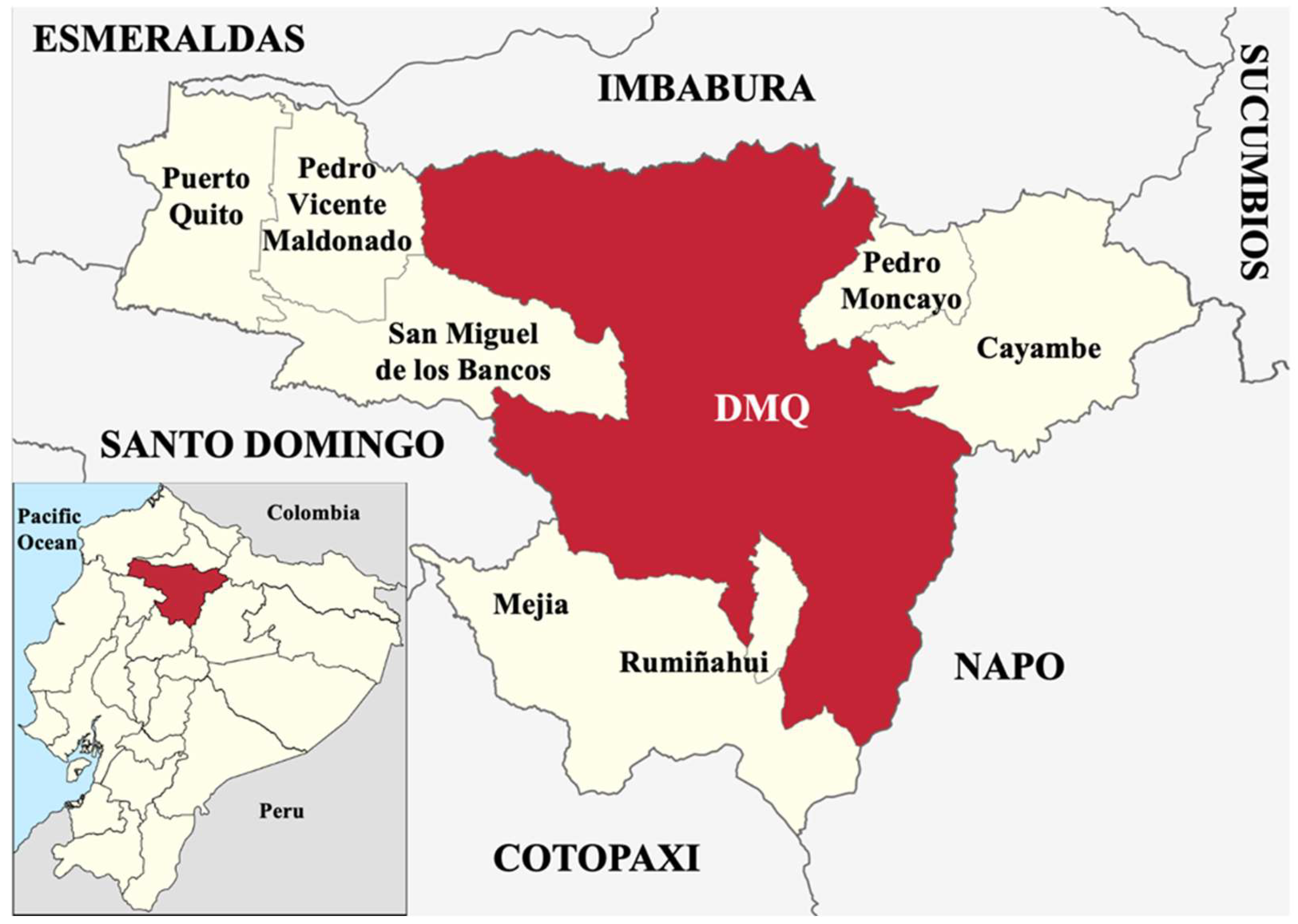
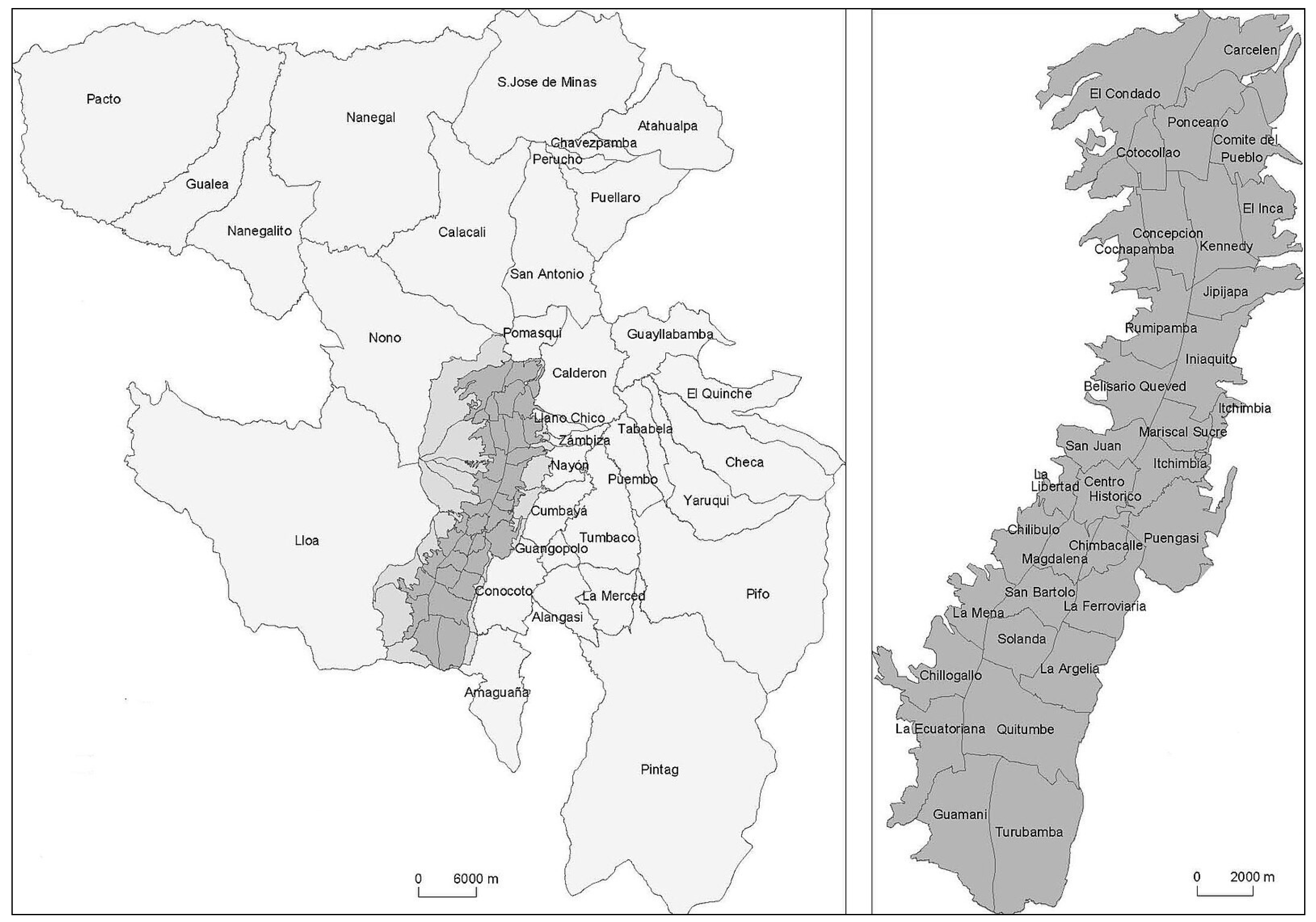

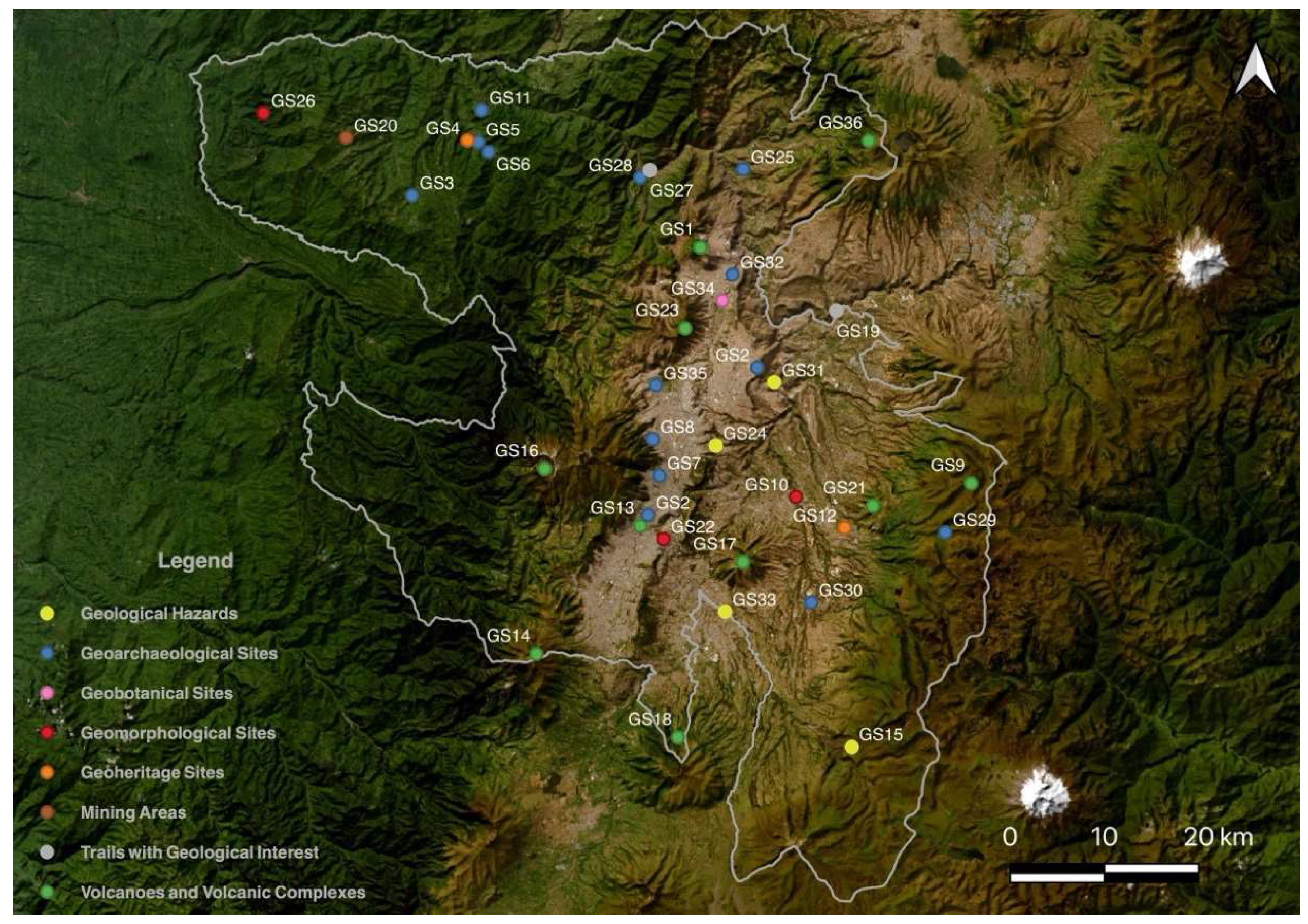

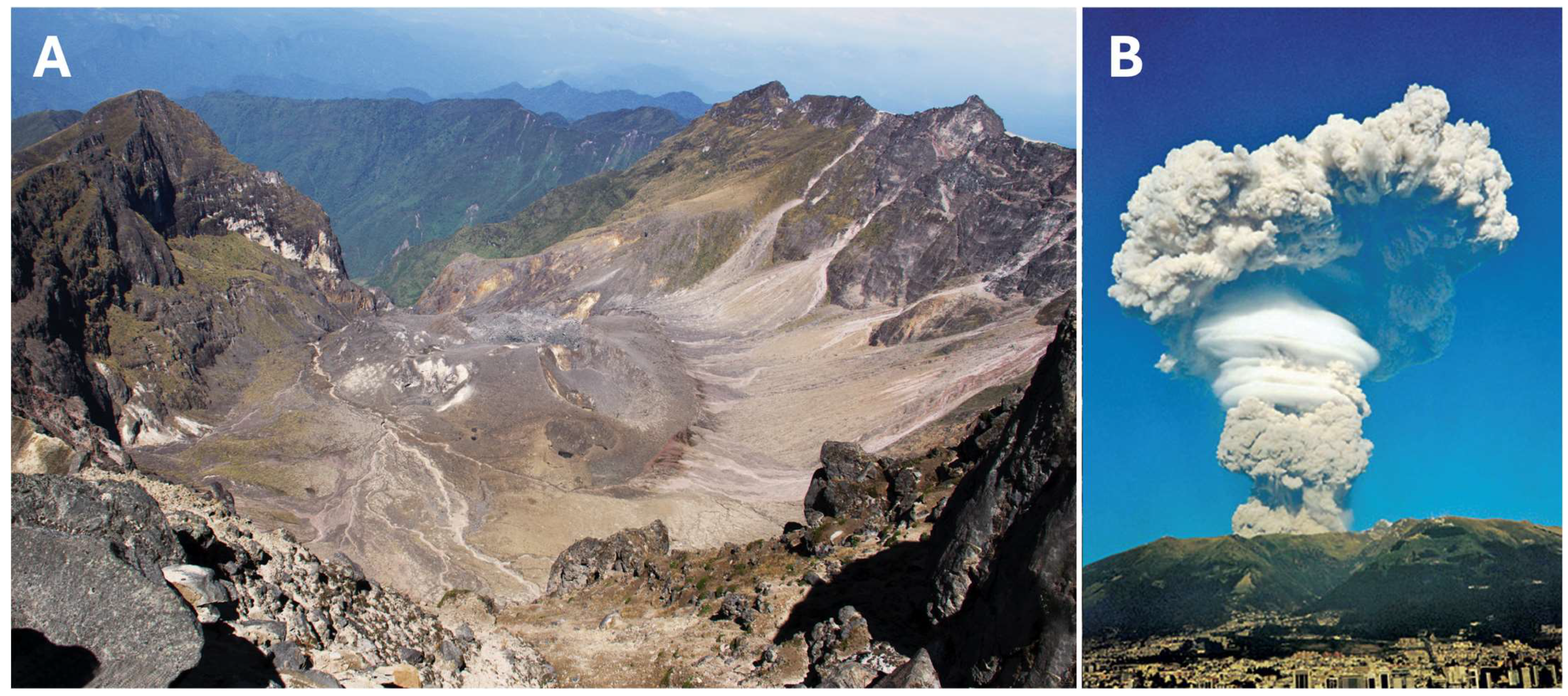
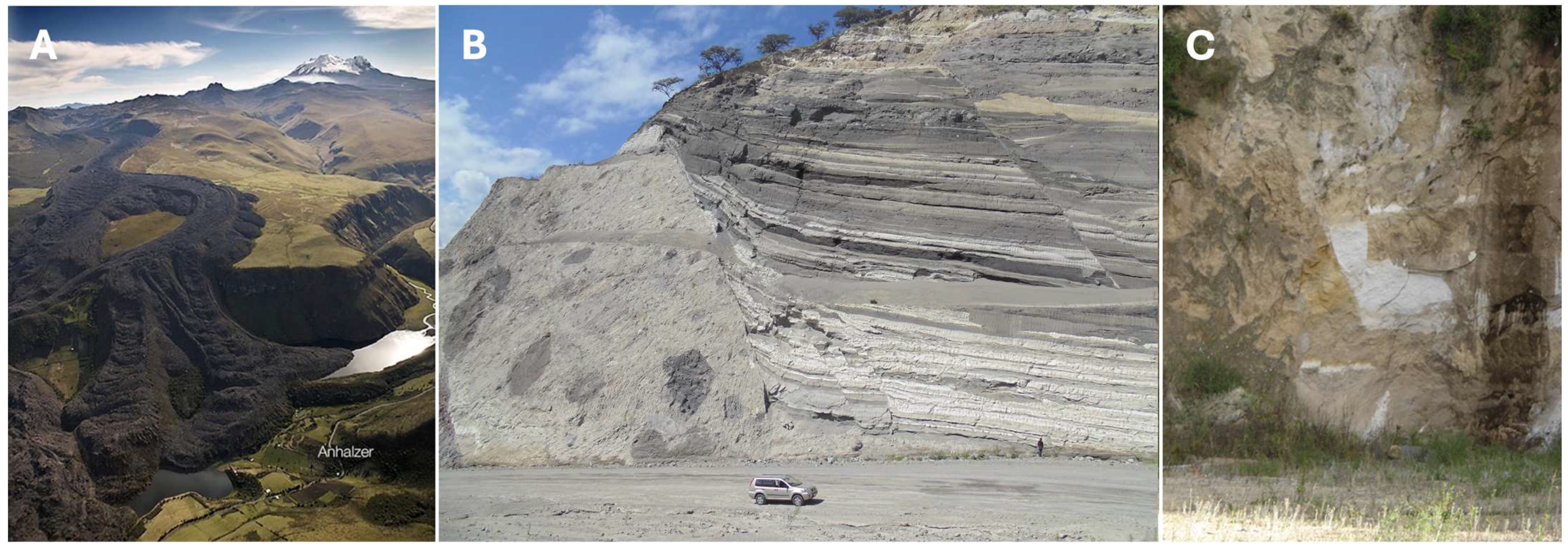
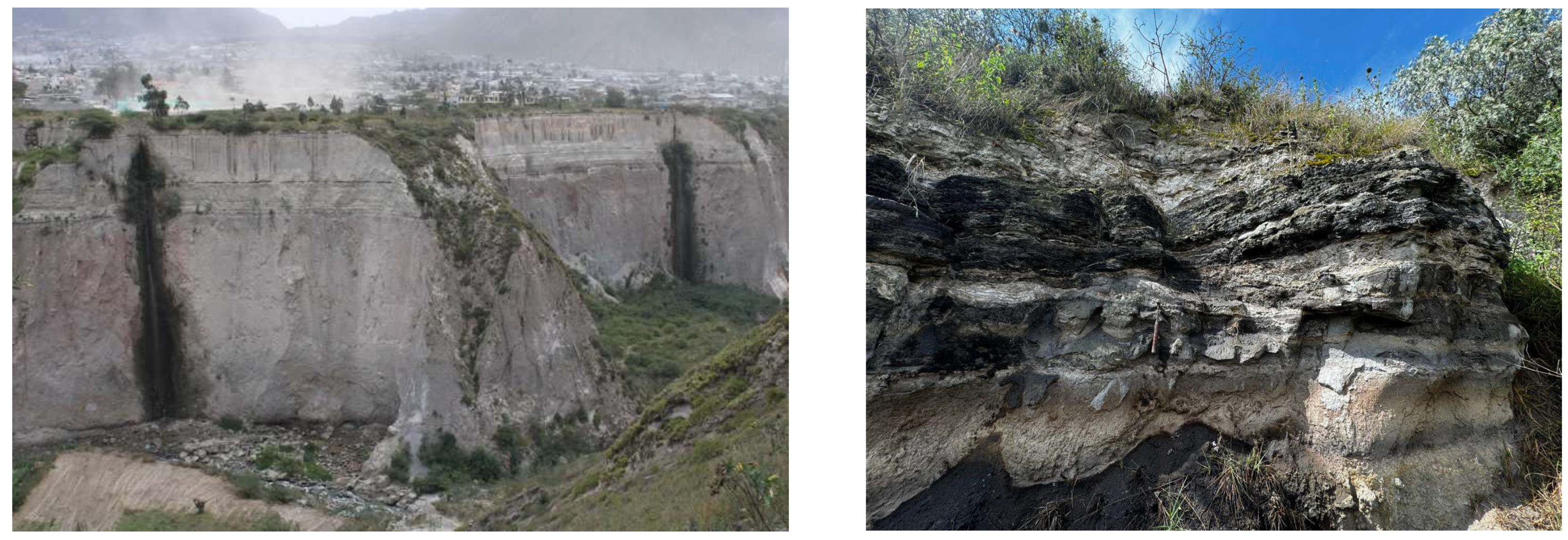
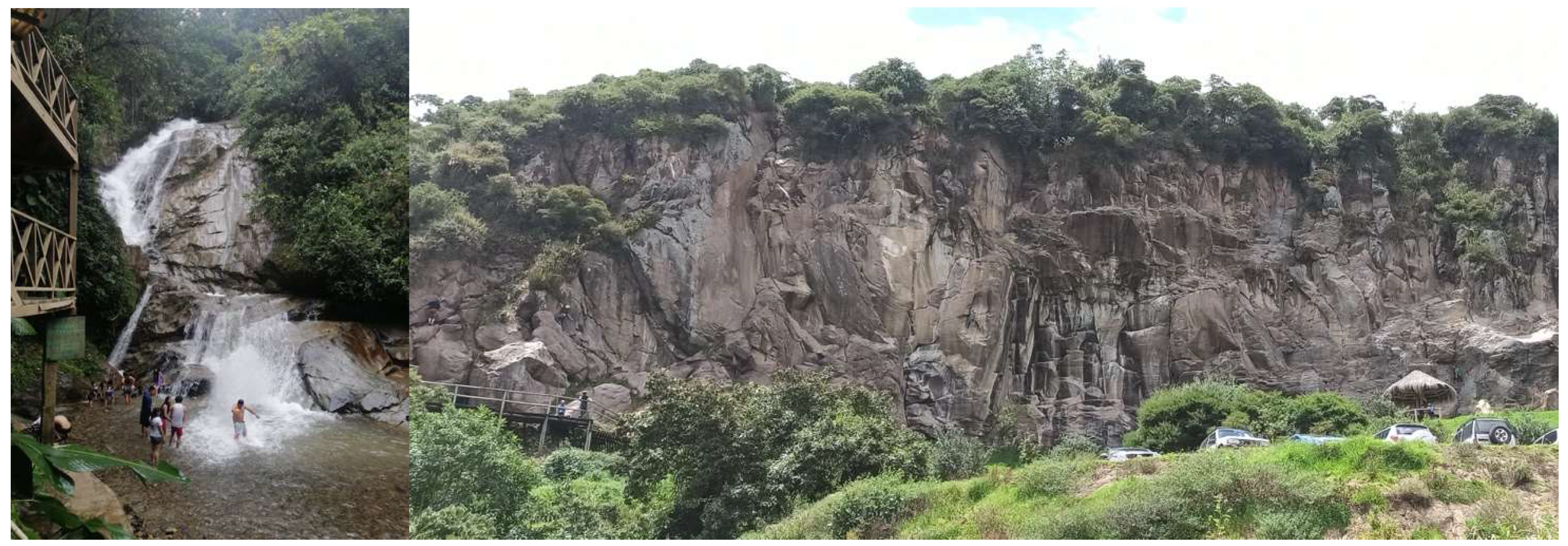

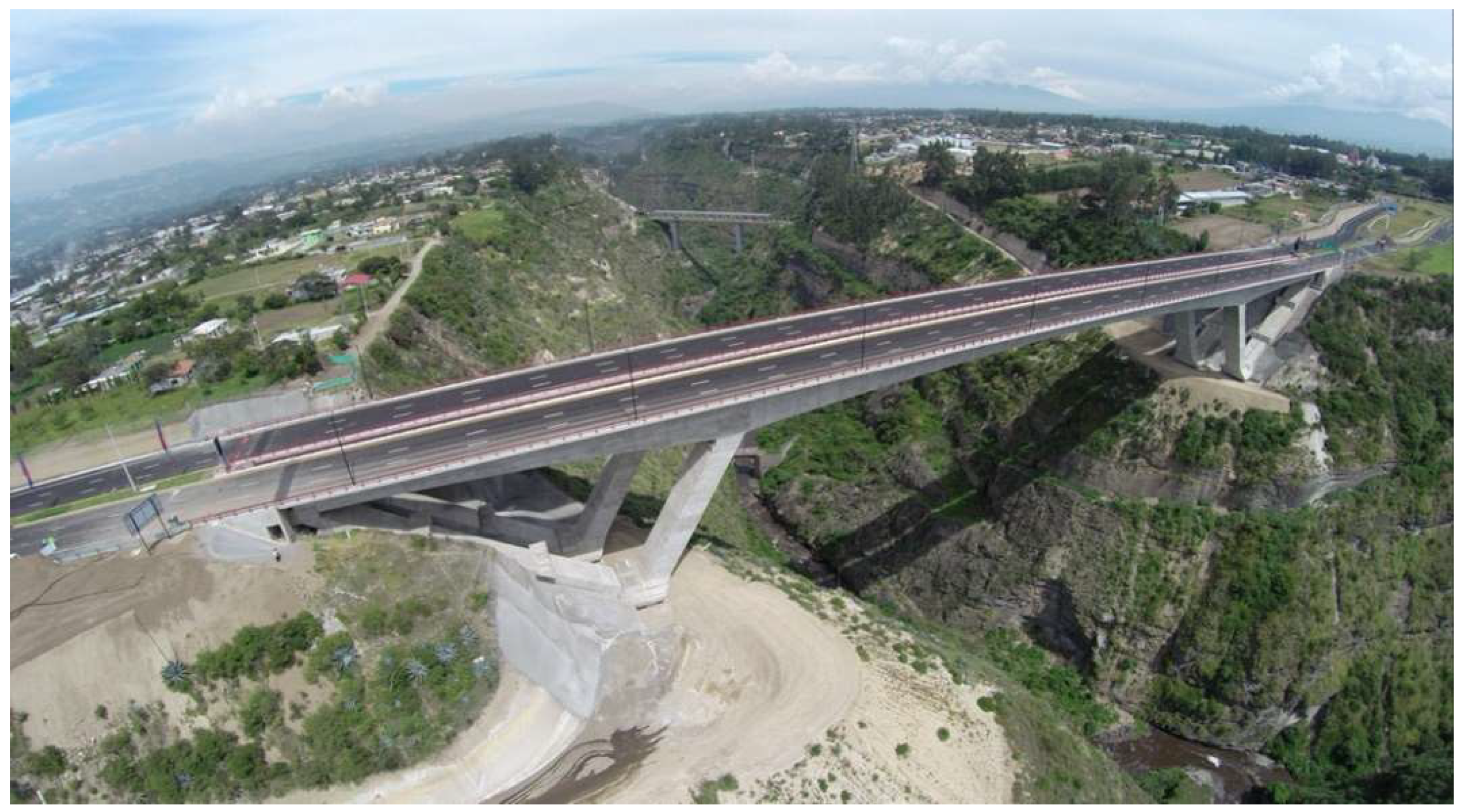
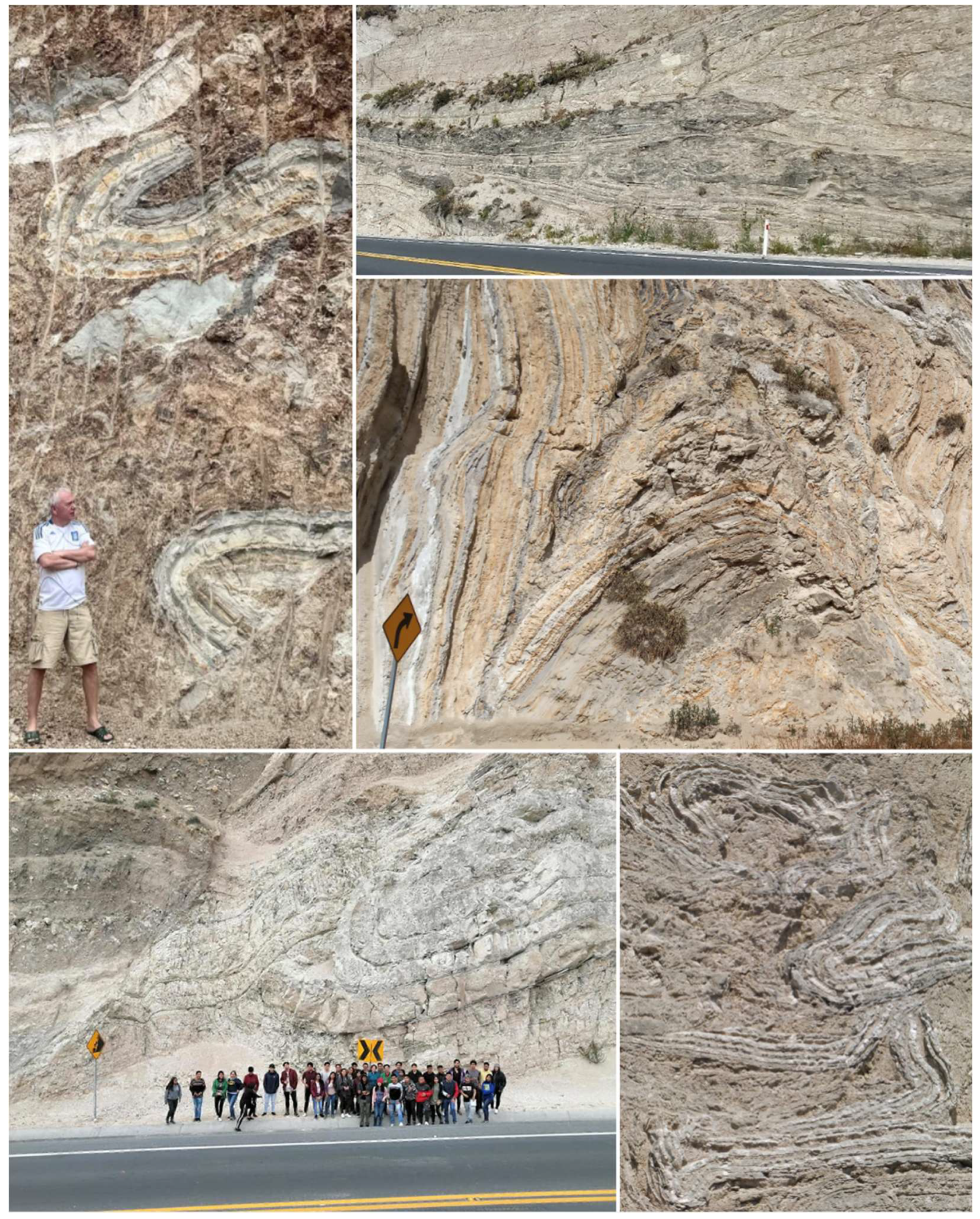
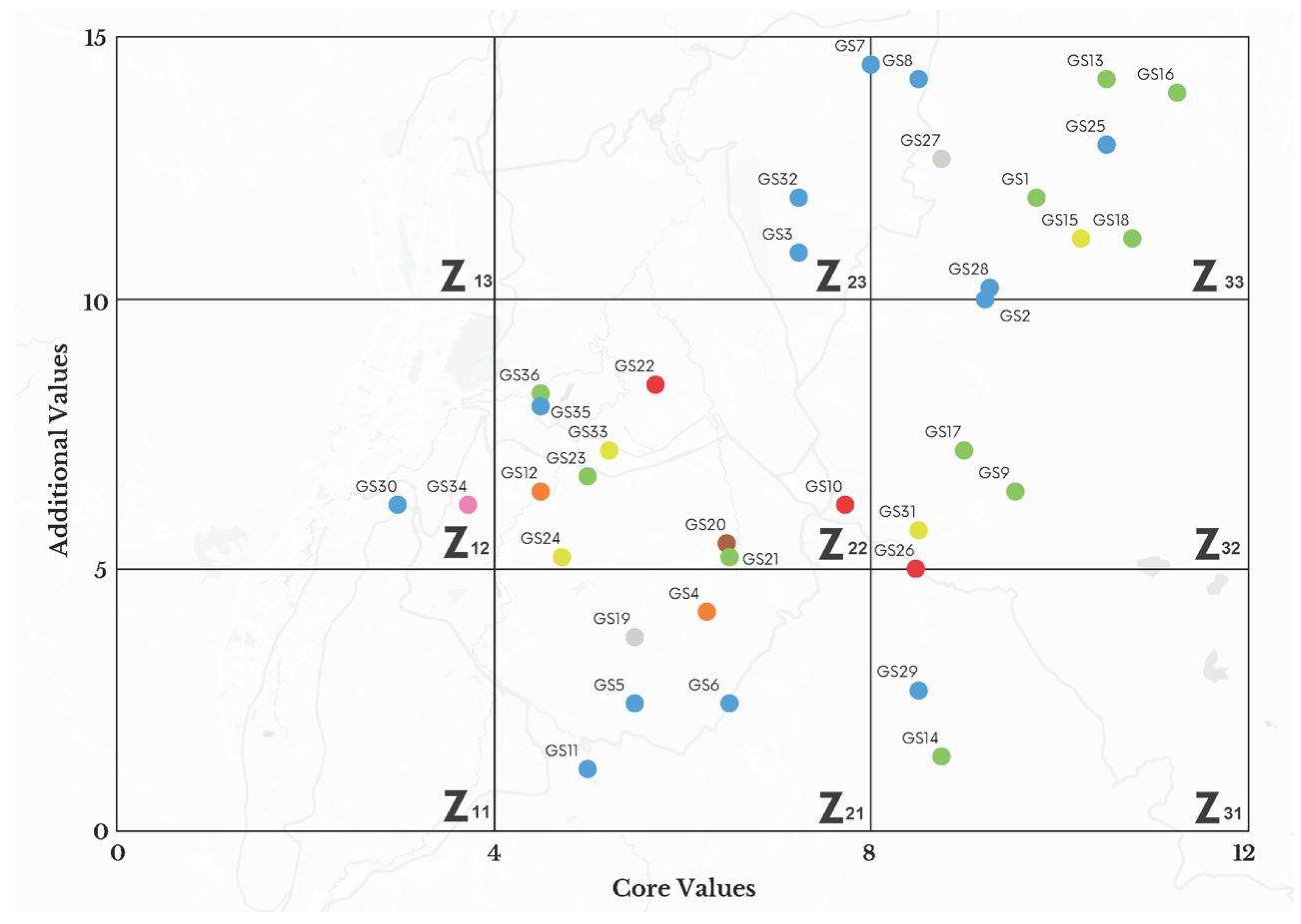
| Criteria/ Methodology | Brilha | IELIG | GAM |
|---|---|---|---|
| Primary objective | Scientifically assess geosites. | Inventory of geological sites with tourism potential. | Comprehensively assess the geosite for scientific and tourism use. |
| Scale of application | Local (geosite-specific). | Regional (broad, inventory of sites). | Local and regional, adaptable. |
| Scientific criteria | Representativeness, rarity, integrity, scientific knowledge. | Geological value and uniqueness. | Scientific value, geological integrity. |
| Educational criteria | Not explicit, inferred as potential. | Yes, direct educational value. | Yes, explicit educational value. |
| Tourism criteria | Mentioned as potential, not central. | Yes, includes accessibility, visibility, fragility. | Yes, includes visual appeal, accessibility, services. |
| Esthetic/visual criteria | Not considered. | Partial (visibility). | Yes, included (visual appeal, harmony). |
| Conservation | Focus on scientific conservation. | Considers fragility and protection. | Conservation integrated with tourism and landscape vision. |
| Community/ human participation | Not considered. | Partial (in tourism aspects). | Yes, included (human perception, social sustainability). |
| Application to geotourism | Limited, conservation-oriented. | High, facilitator of sustainable geotourism. | Very high, integrates science and tourism. |
| Strengths | Scientific rigor. | Comprehensive, practical for regional management. | Holistic, adaptable, pro-sustainable tourism. |
| Limitations | Lack of direct tourism and educational perspective. | May dilute scientific value if tourism is prioritized. | Requires extensive data and resources for full implementation. |
| GS1 | Pululahua caldera and dome complex | GS19 | Pyroclasts of Guayllabamba |
| GS2 | Qhapaq Ñan Inca trail | GS20 | Pacto’s gold deposits |
| GS3 | Tulipe geoarchaeological site | GS21 | Coturco volcano |
| GS4 | Piragua cascade | GS22 | Loma de Puengasí geological fault |
| GS5 | Yumba rock | GS23 | Casitagua volcano |
| GS6 | Orozona rock | GS24 | Zámbiza¨s geological fault |
| GS7 | Rumipamba geoarchaeological site | GS25 | Perucho Formativo a Españoles |
| GS8 | La Florida geoarchaeological site | GS26 | Mashpi’s sediments |
| GS9 | El Cerro Puntas volcano | GS27 | Yunguilla’s geologic formation |
| GS10 | El Chiche volcanics | GS28 | Los Coluncos Yumbos geoarchaeological site |
| GS11 | Pucará de Palmitopamba | GS29 | Mullimica geoarchaeological site |
| GS12 | Sigsipamba obsidians | GS30 | El Inga geoarchaeological site |
| GS13 | Panecillo volcanic dome | GS31 | Collas debris avalanche |
| GS14 | Atacazo-Niñahuilca-Carcacha volcanoes | GS32 | Rumicucho geoarchaeological site |
| GS15 | Antisanilla lava flow | GS33 | Cotopaxi’s lahars |
| GS16 | Pichincha Volcanic Complex | GS34 | Charcoal of San Antonio de Pichincha |
| GS17 | Ilaló volcano | GS35 | El Rancho geoarchaeological site |
| GS18 | Pasochoa volcano | GS36 | Mojanda volcano |
| Years | Period | Representative Sites |
|---|---|---|
| 1534 | Colonial | San Francisco, Santo Domingo |
| 1400–1534 | Inca | Rumicucho, Pucara de Palmitopamba |
| 800 A.D–1400 A.D | Integration | Nuevo Aeropuerto, Chilibulo, La Florida, Tulipe |
| 400 B.C–600 A.D | Regional Development | Jardín del Este |
| 1500 B.C–400 B.C | Formative | Cotocollao |
| 9000 B.C–1500 B.C | Archaic | Tagshima, Rancho Bajo |
| 11,000 B.C–9000 B.C | Paleoindian | El Inga |
| Geosite of the DMQ | Core Values | Additional Values | Global | Zoning | ||||
|---|---|---|---|---|---|---|---|---|
| VSE | VSA | VPr | VFn | VTr | ||||
| GS1 | Pululahua volcano | 4.00 | 2.25 | 3.50 | 5.75 | 6.25 | 21.75 | Z33 |
| GS2 | Qhapaq Ñan Trail | 3.75 | 3.00 | 3.00 | 4.25 | 5.75 | 19.75 | Z33 |
| GS3 | Tulipe geoarchaeologic site | 3.00 | 2.00 | 2.25 | 4.25 | 6.75 | 18.25 | Z23 |
| GS4 | Piragua waterfall | 1.25 | 2.25 | 2.75 | 2.75 | 1.50 | 10.50 | Z21 |
| GS5 | Rock of Yumba | 1.50 | 1.25 | 2.75 | 2.00 | 0.50 | 8.00 | Z21 |
| GS6 | Rock of Orozona | 2.50 | 2.00 | 2.00 | 1.75 | 0.75 | 9.00 | Z21 |
| GS7 | Rumipamba geoarchaeologic site | 3.00 | 1.75 | 3.25 | 5.75 | 8.75 | 22.50 | Z23 |
| GS8 | La Florida geoarchaeologic site | 3.50 | 1.75 | 3.25 | 5.75 | 8.5 | 22.75 | Z33 |
| GS9 | El Cerro Puntas volcano | 3.00 | 3.00 | 3.50 | 2.25 | 4.25 | 16.00 | Z32 |
| GS10 | El Chiche profile | 2.00 | 3.00 | 2.75 | 3.25 | 3.00 | 14.00 | Z22 |
| GS11 | Pucará de Palmitopamba | 1.50 | 1.25 | 2.25 | 1.00 | 0.25 | 6.25 | Z21 |
| GS12 | Sigsipamba wall | 2.25 | 2.00 | 2.00 | 4.00 | 2.50 | 12.75 | Z22 |
| GS13 | Panecillo volcanic dome | 3.50 | 3.50 | 3.50 | 6.00 | 8.25 | 24.75 | Z33 |
| GS14 | Atacazo-Niñahuilca-Carcacha | 4.00 | 2.50 | 2.25 | 1.00 | 0.50 | 10.25 | Z31 |
| GS15 | Antisanilla lava flow | 4.00 | 3.25 | 3.00 | 4.50 | 6.75 | 21.50 | Z33 |
| GS16 | Pichincha volcanic complex | 4.00 | 4.00 | 3.25 | 5.00 | 9.00 | 25.25 | Z33 |
| GS17 | Ilaló volcano | 3.75 | 2.25 | 3.00 | 3.25 | 4.00 | 16.25 | Z32 |
| GS18 | Pasochoa volcano | 3.75 | 3.50 | 3.50 | 4.25 | 7.00 | 22.00 | Z33 |
| GS19 | Guayllabamba slumping | 2.00 | 2.00 | 2.50 | 2.50 | 1.25 | 10.25 | Z21 |
| GS20 | Pacto’s gold mine | 2.75 | 1.75 | 3.25 | 3.75 | 1.75 | 13.25 | Z22 |
| GS21 | Coturco volcano | 1.75 | 2.00 | 2.75 | 3.50 | 2.00 | 12.00 | Z22 |
| GS22 | Loma de Puengasí fault | 2.25 | 1.75 | 1.75 | 5.25 | 3.25 | 14.25 | Z22 |
| GS23 | Casitagua volcano | 1.25 | 2.00 | 1.75 | 4.50 | 2.25 | 11.75 | Z22 |
| GS24 | Zámbiza’s geological fault | 2.00 | 1.25 | 1.50 | 3.75 | 1.50 | 10.00 | Z22 |
| GS25 | Perucho Formative | 3.50 | 3.75 | 3.25 | 5.00 | 8.00 | 23.50 | Z33 |
| GS26 | Mashpi’s sediments | 2.25 | 2.00 | 2.75 | 3.25 | 1.75 | 12.00 | Z32 |
| GS27 | Yunguilla formation | 3.50 | 2.00 | 3.25 | 4.75 | 8.00 | 21.50 | Z33 |
| GS28 | Los Coluncos Yumbos | 3.00 | 3.50 | 2.75 | 4.50 | 5.75 | 19.50 | Z33 |
| GS29 | Mullimica geoarchaeologic site | 3.00 | 2.50 | 3.00 | 1.25 | 1.50 | 11.25 | Z31 |
| GS30 | El Inga geoarcheologic site | 1.50 | 1.00 | 0.50 | 4.50 | 1.75 | 9.25 | Z12 |
| GS31 | Collas debris avalanche | 3.00 | 2.50 | 3.00 | 4.25 | 1.50 | 14.25 | Z32 |
| GS32 | Rumicucho geoarchaeologic site | 3.25 | 2.25 | 3.50 | 4.75 | 7.25 | 21.00 | Z23 |
| GS33 | Lahars of Los Chillos | 2.25 | 0.75 | 2.25 | 4.75 | 2.50 | 12.50 | Z22 |
| GS34 | Charcoal of San Antonio | 1.75 | 0.25 | 1.75 | 4.50 | 1.75 | 10.00 | Z12 |
| GS35 | El Rancho geoarchaeologic site | 1.25 | 1.00 | 2.25 | 4.50 | 3.50 | 12.50 | Z22 |
| GS36 | Mojanda volcano | 3.75 | 2.25 | 2.75 | 3.50 | 4.75 | 17.00 | Z22 |
Disclaimer/Publisher’s Note: The statements, opinions and data contained in all publications are solely those of the individual author(s) and contributor(s) and not of MDPI and/or the editor(s). MDPI and/or the editor(s) disclaim responsibility for any injury to people or property resulting from any ideas, methods, instructions or products referred to in the content. |
© 2025 by the authors. Licensee MDPI, Basel, Switzerland. This article is an open access article distributed under the terms and conditions of the Creative Commons Attribution (CC BY) license (https://creativecommons.org/licenses/by/4.0/).
Share and Cite
Toulkeridis, T.; Páez-Barrera, G.T.; Chávez-Melo, M.F.; Alvarez-Calupiña, G.F.; Espinoza-Carriel, P.M.; Chiriboga-Barba, D.F.; Delgado-Espinoza, F.; Velasquez-Muela, M.; Salas-Álvarez, W.; Frey, C.; et al. Remarkable Geosites of Quito That Are Aspiring to Be a UNESCO Global Geopark. Geosciences 2025, 15, 116. https://doi.org/10.3390/geosciences15040116
Toulkeridis T, Páez-Barrera GT, Chávez-Melo MF, Alvarez-Calupiña GF, Espinoza-Carriel PM, Chiriboga-Barba DF, Delgado-Espinoza F, Velasquez-Muela M, Salas-Álvarez W, Frey C, et al. Remarkable Geosites of Quito That Are Aspiring to Be a UNESCO Global Geopark. Geosciences. 2025; 15(4):116. https://doi.org/10.3390/geosciences15040116
Chicago/Turabian StyleToulkeridis, Theofilos, Grace Tatiana Páez-Barrera, María Fernanda Chávez-Melo, Gabriela Fernanda Alvarez-Calupiña, Pablo Marcelo Espinoza-Carriel, Danny Fernando Chiriboga-Barba, Florencio Delgado-Espinoza, Melany Velasquez-Muela, Wilson Salas-Álvarez, Catherine Frey, and et al. 2025. "Remarkable Geosites of Quito That Are Aspiring to Be a UNESCO Global Geopark" Geosciences 15, no. 4: 116. https://doi.org/10.3390/geosciences15040116
APA StyleToulkeridis, T., Páez-Barrera, G. T., Chávez-Melo, M. F., Alvarez-Calupiña, G. F., Espinoza-Carriel, P. M., Chiriboga-Barba, D. F., Delgado-Espinoza, F., Velasquez-Muela, M., Salas-Álvarez, W., Frey, C., & Sinde-González, I. (2025). Remarkable Geosites of Quito That Are Aspiring to Be a UNESCO Global Geopark. Geosciences, 15(4), 116. https://doi.org/10.3390/geosciences15040116








